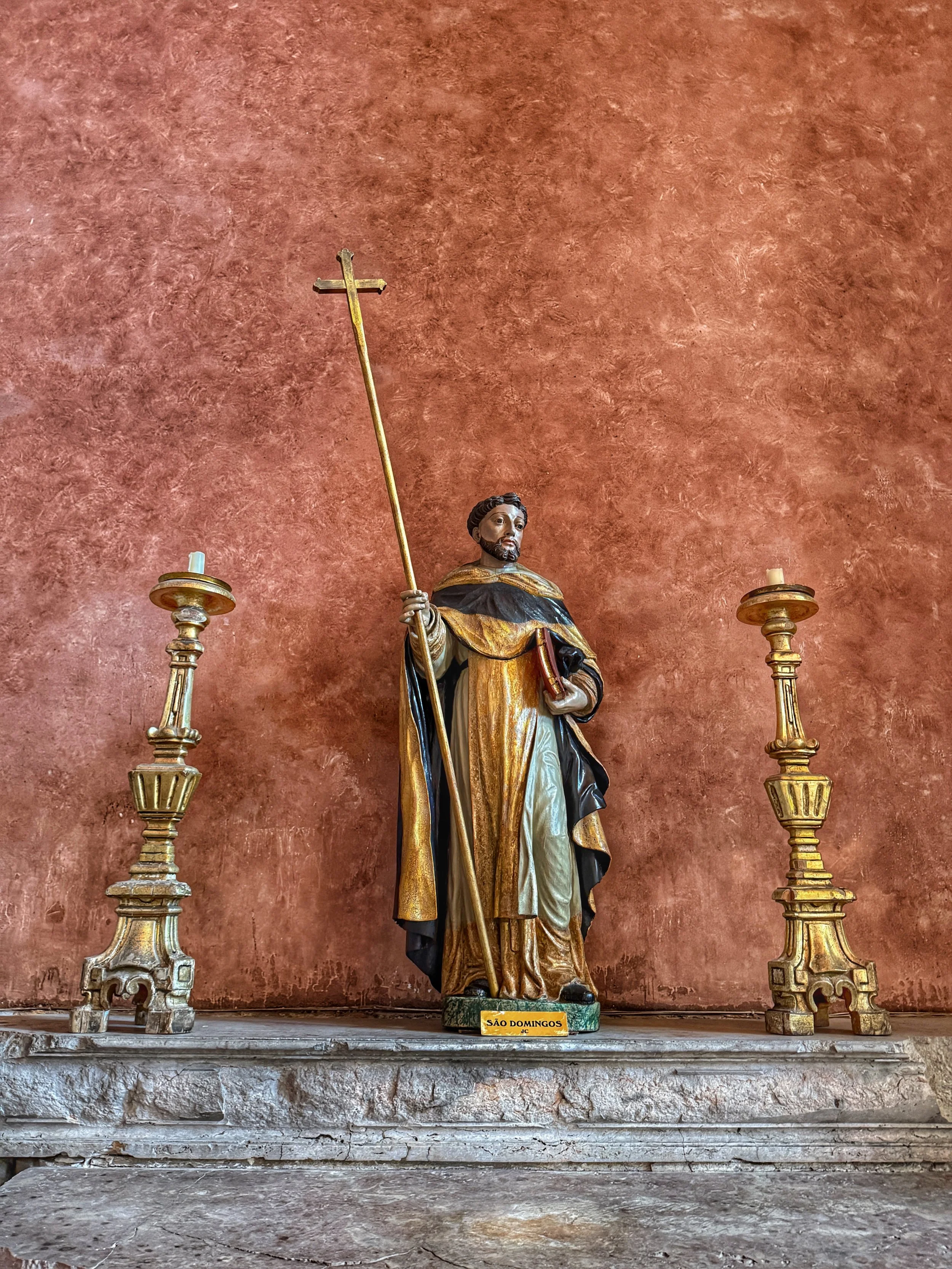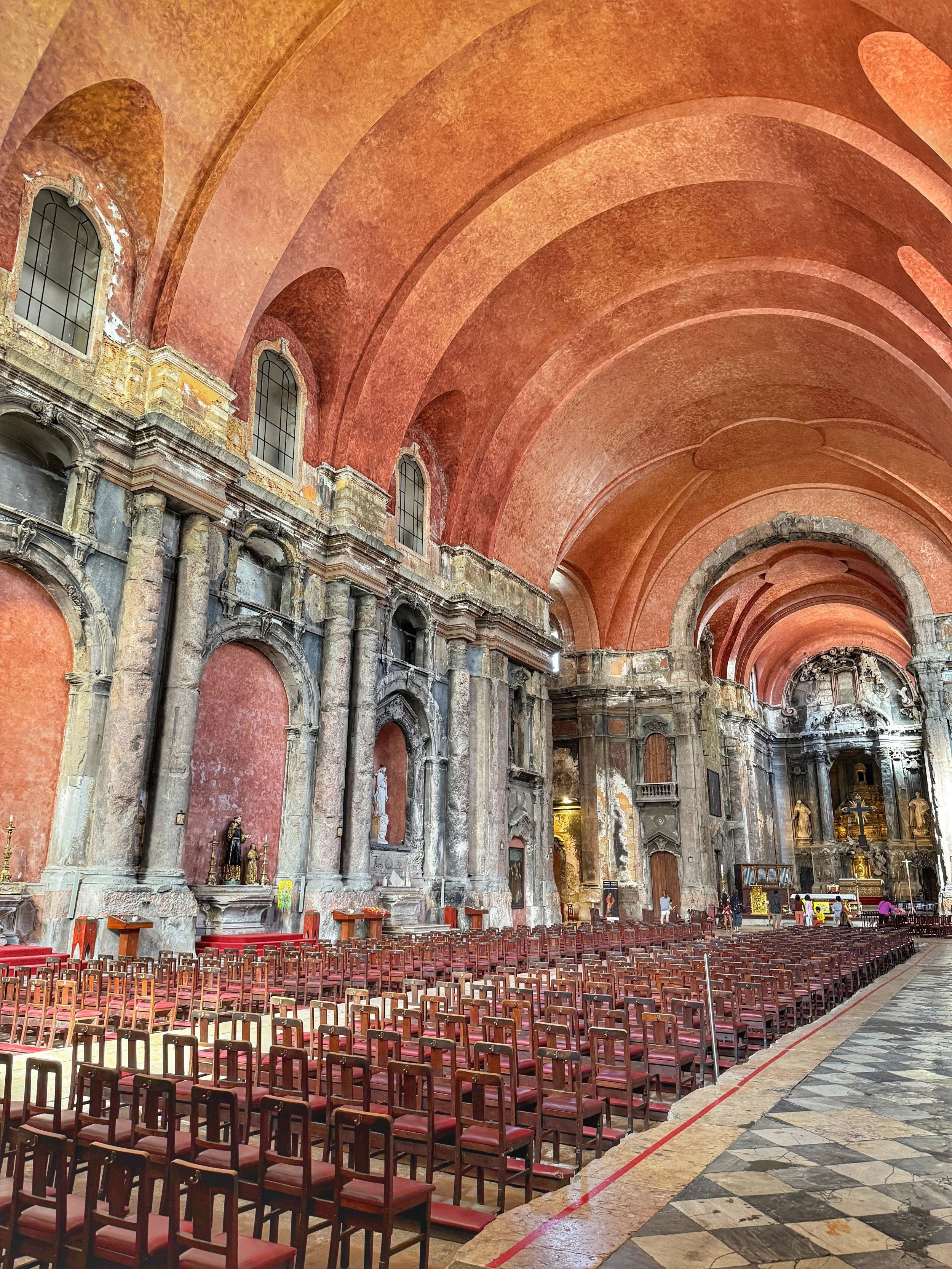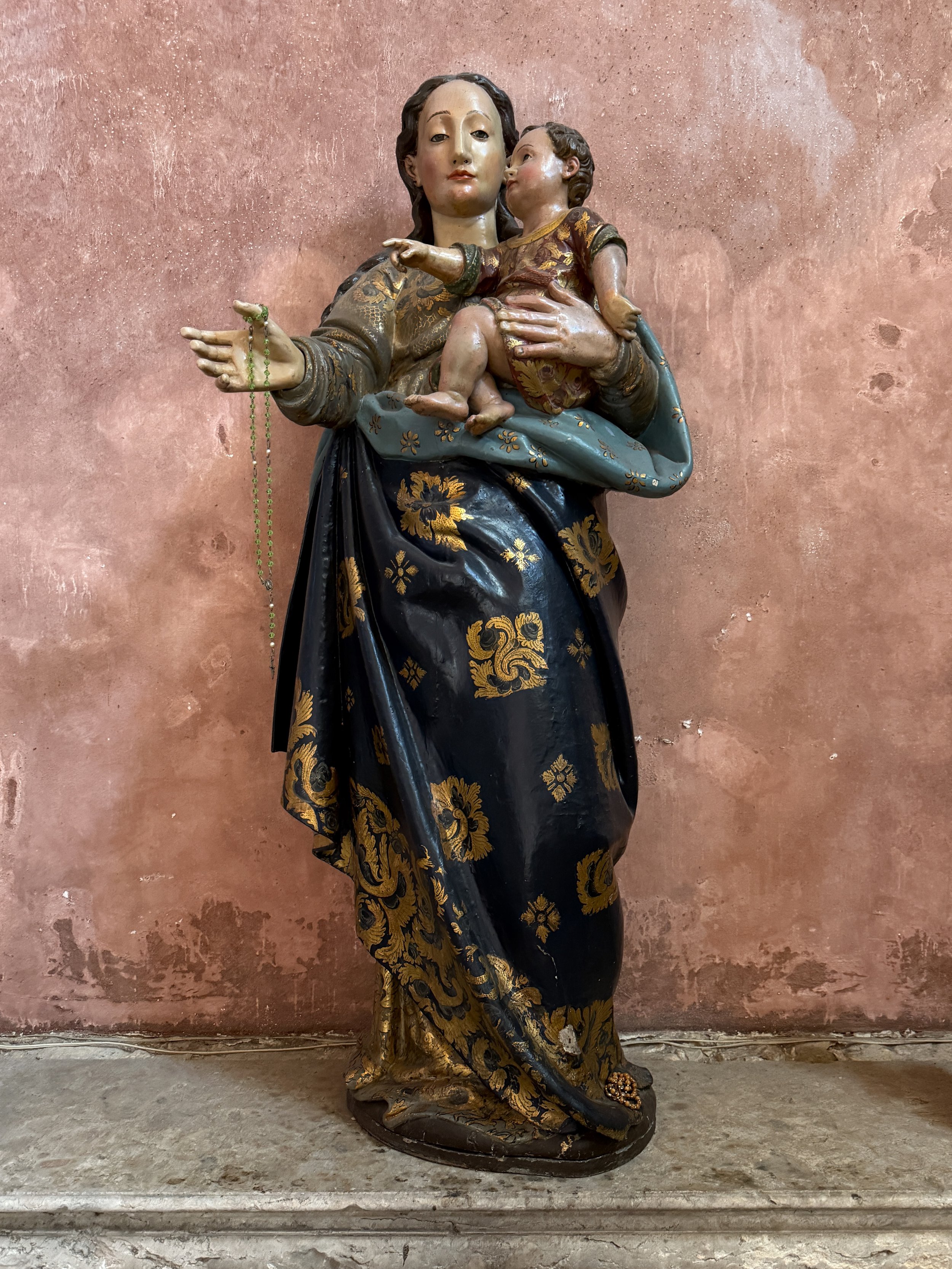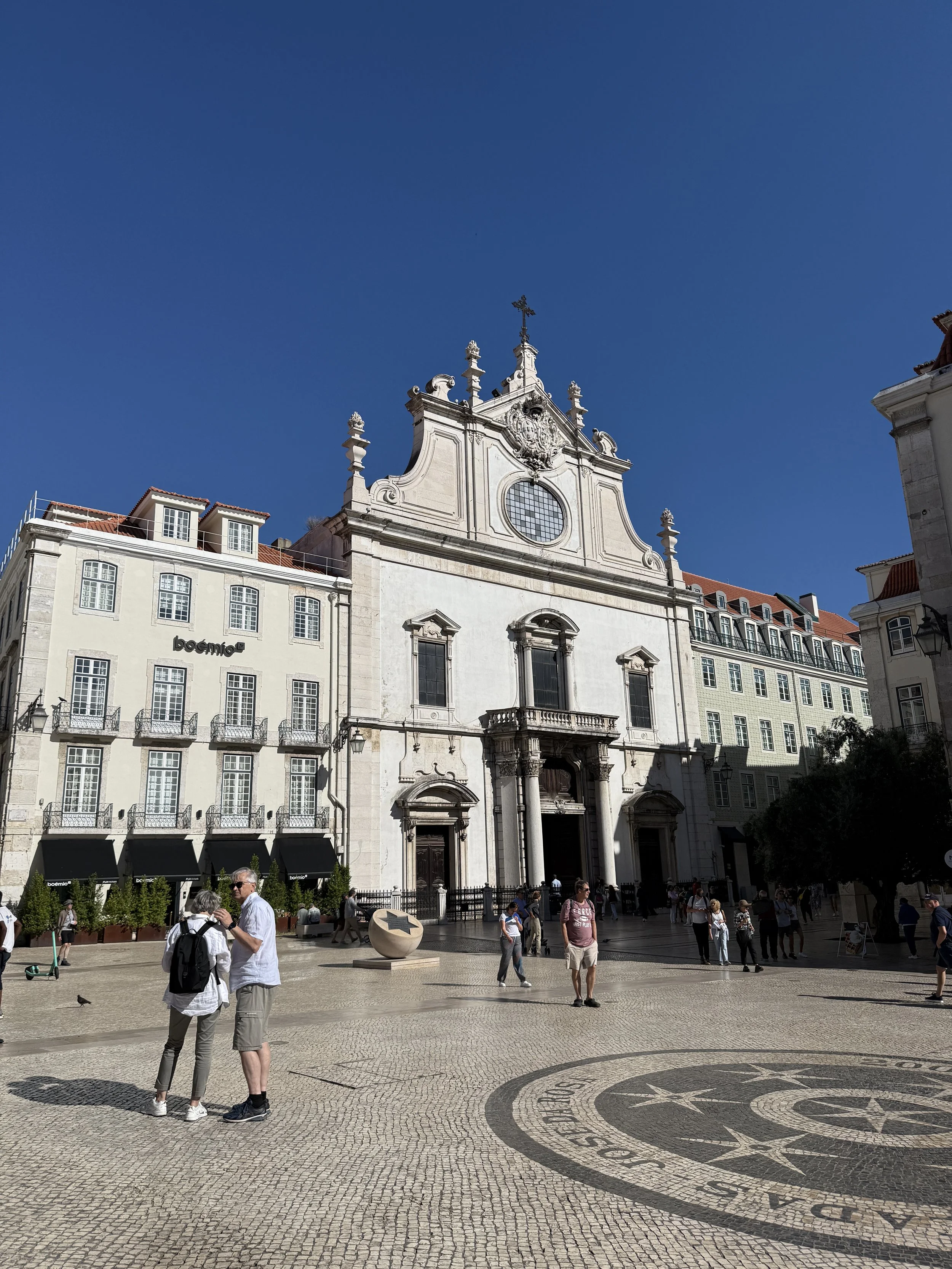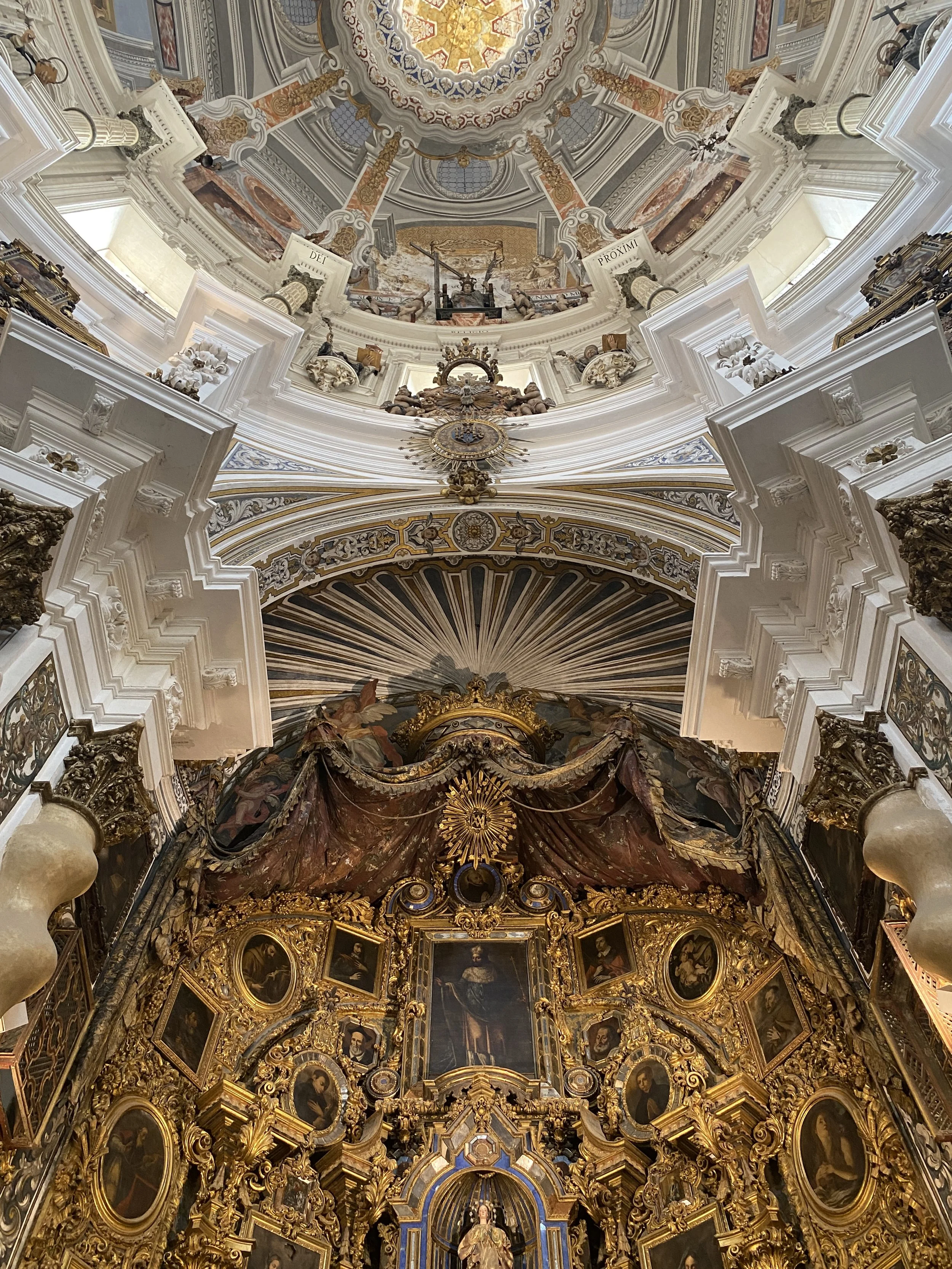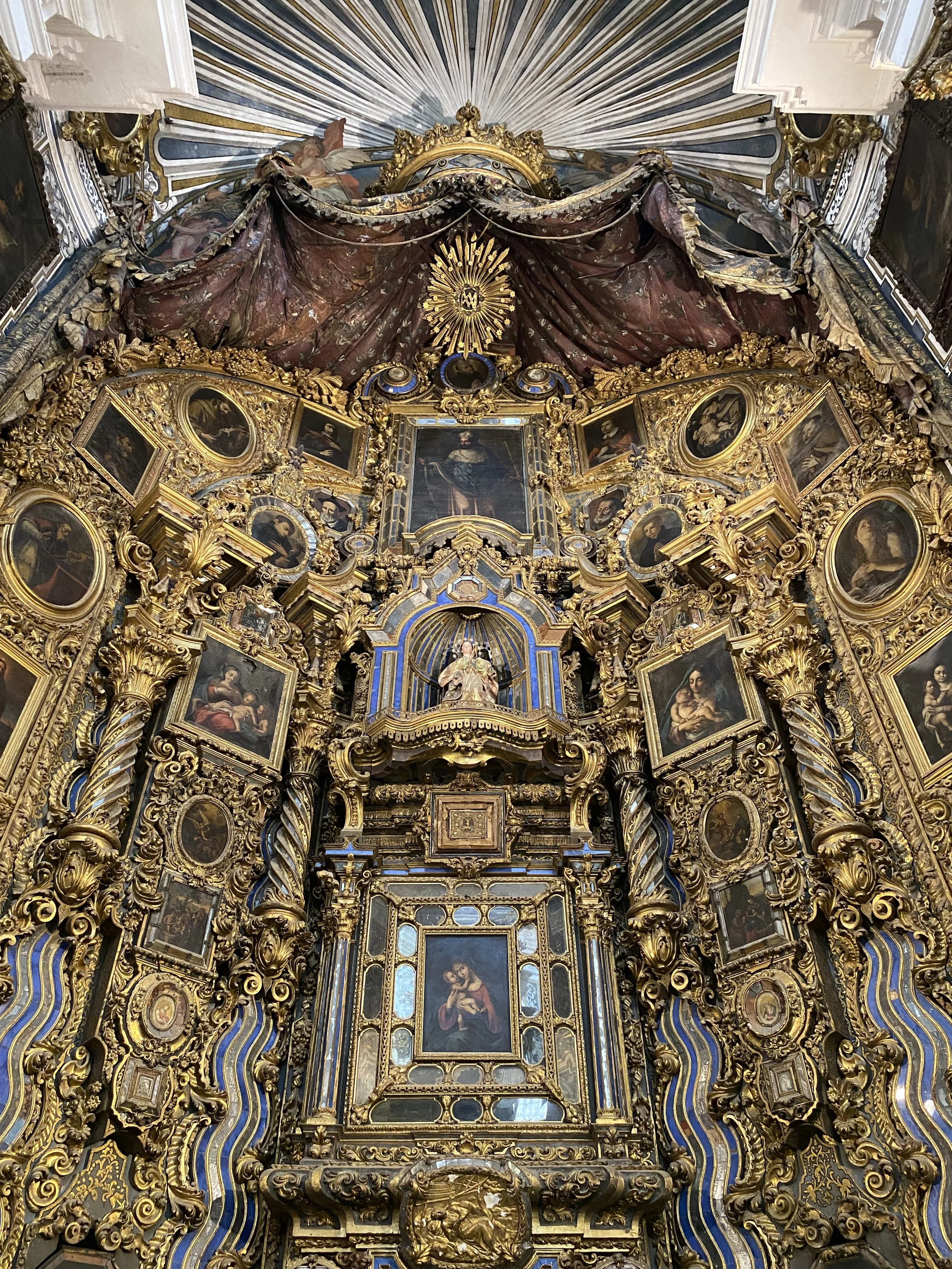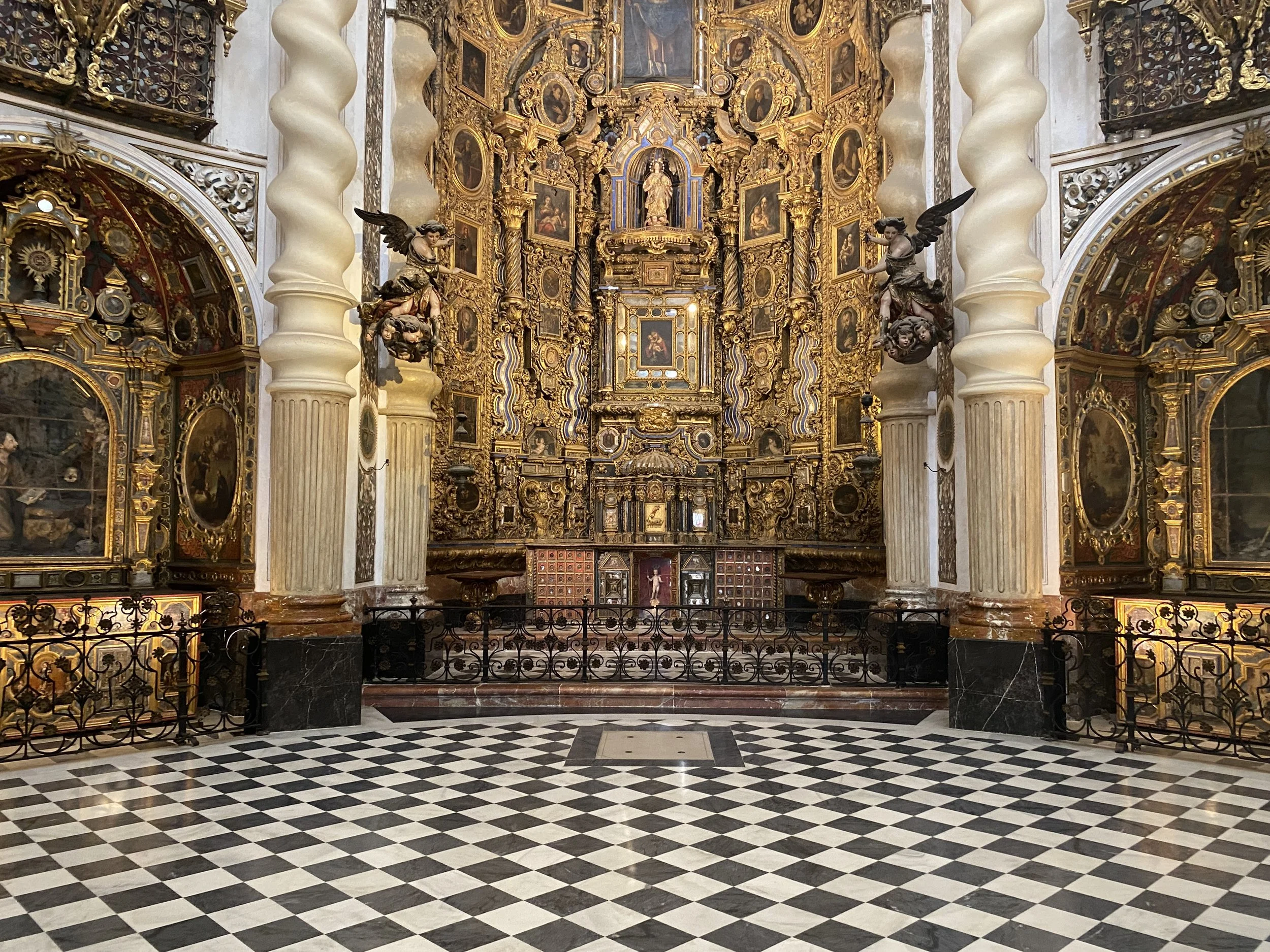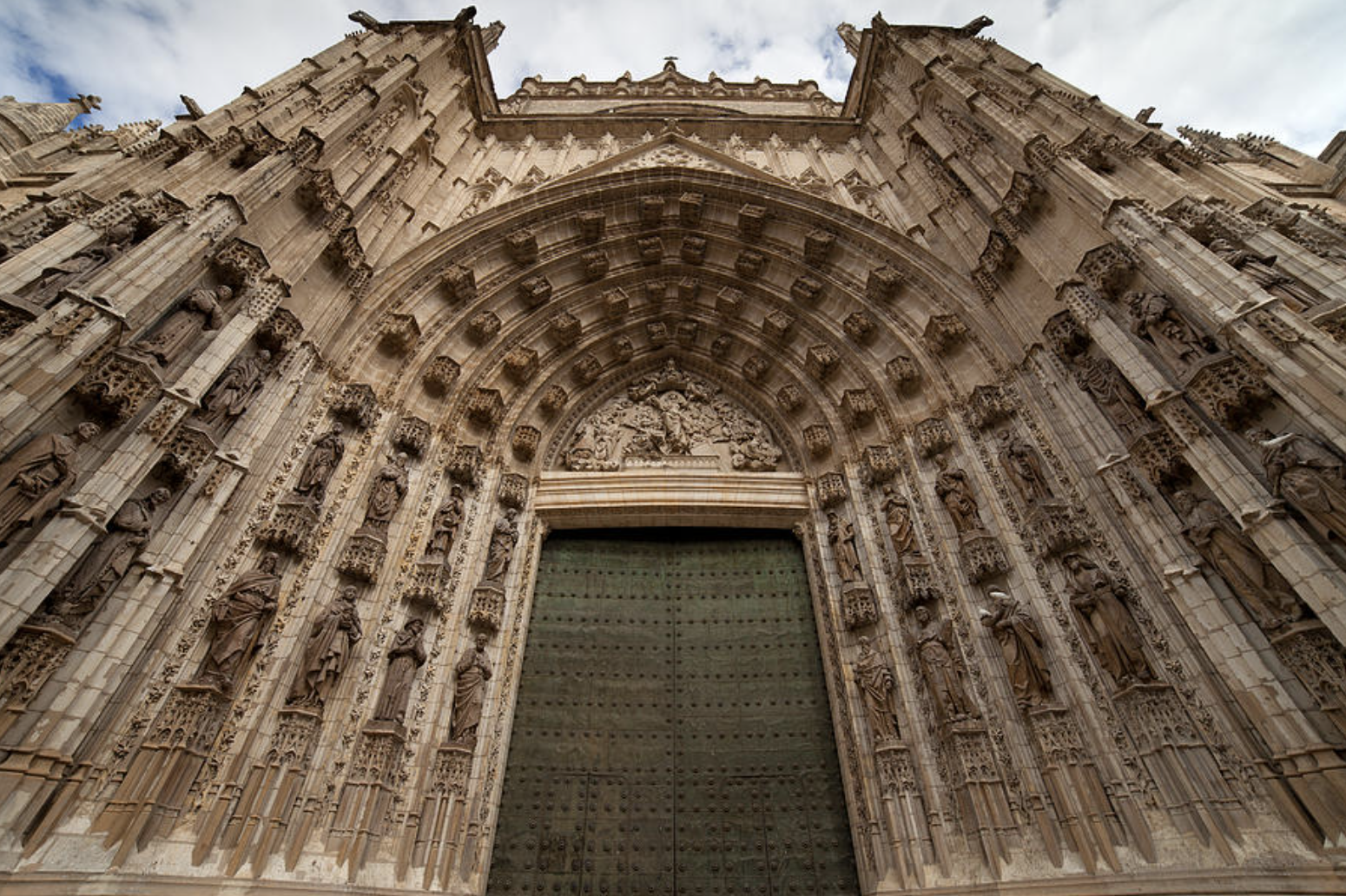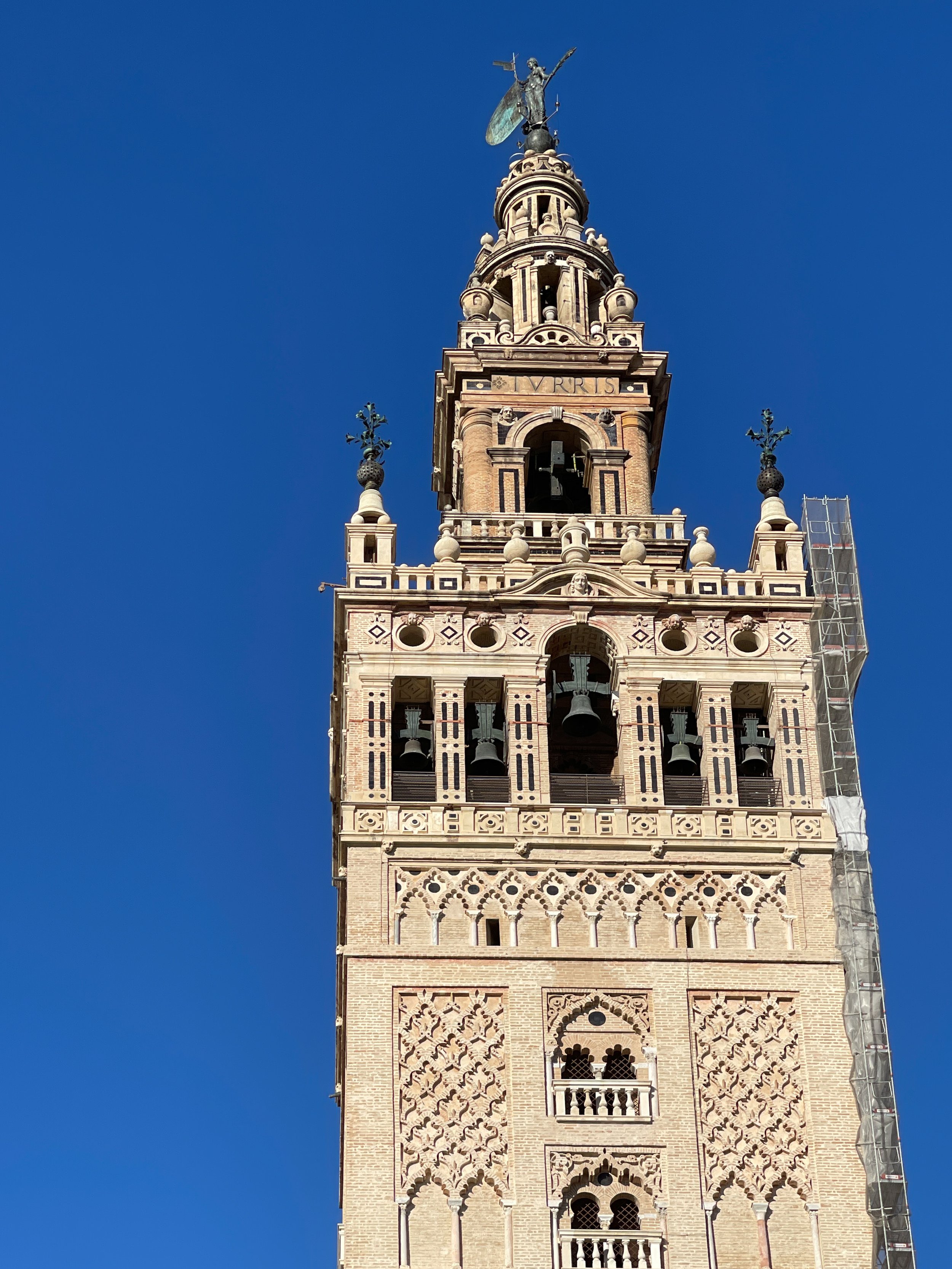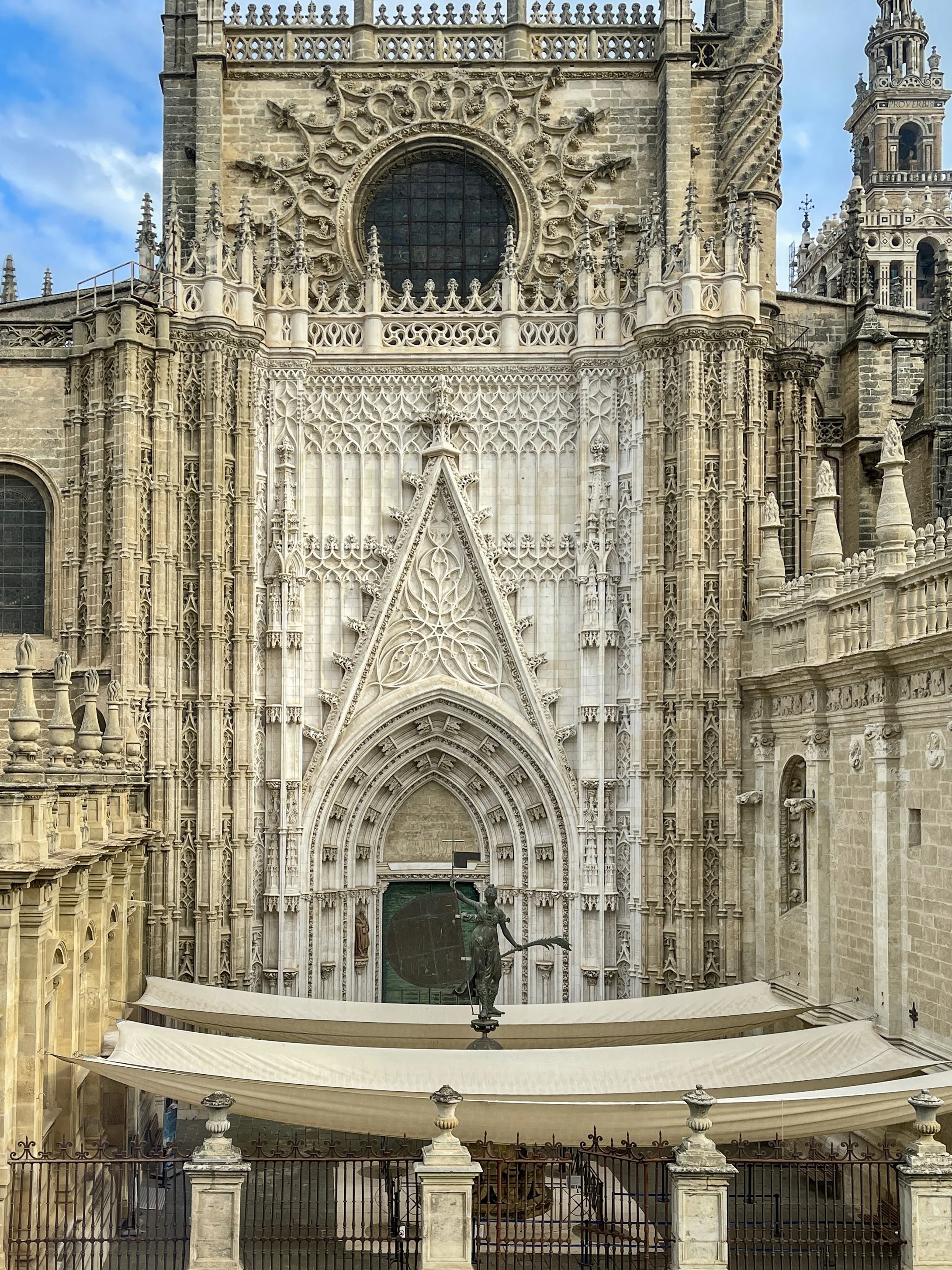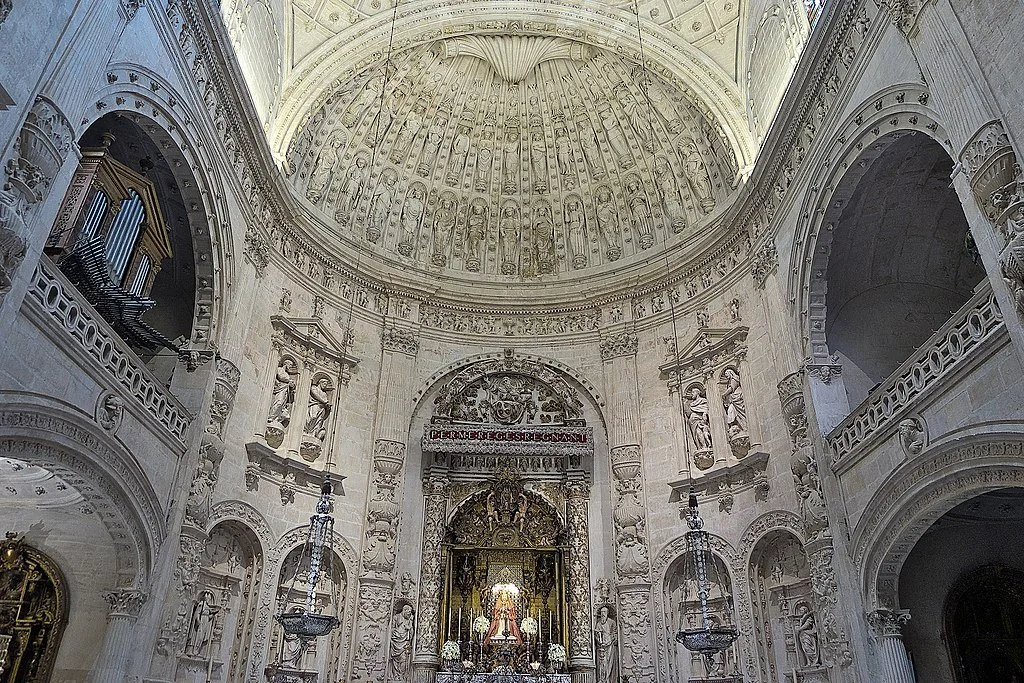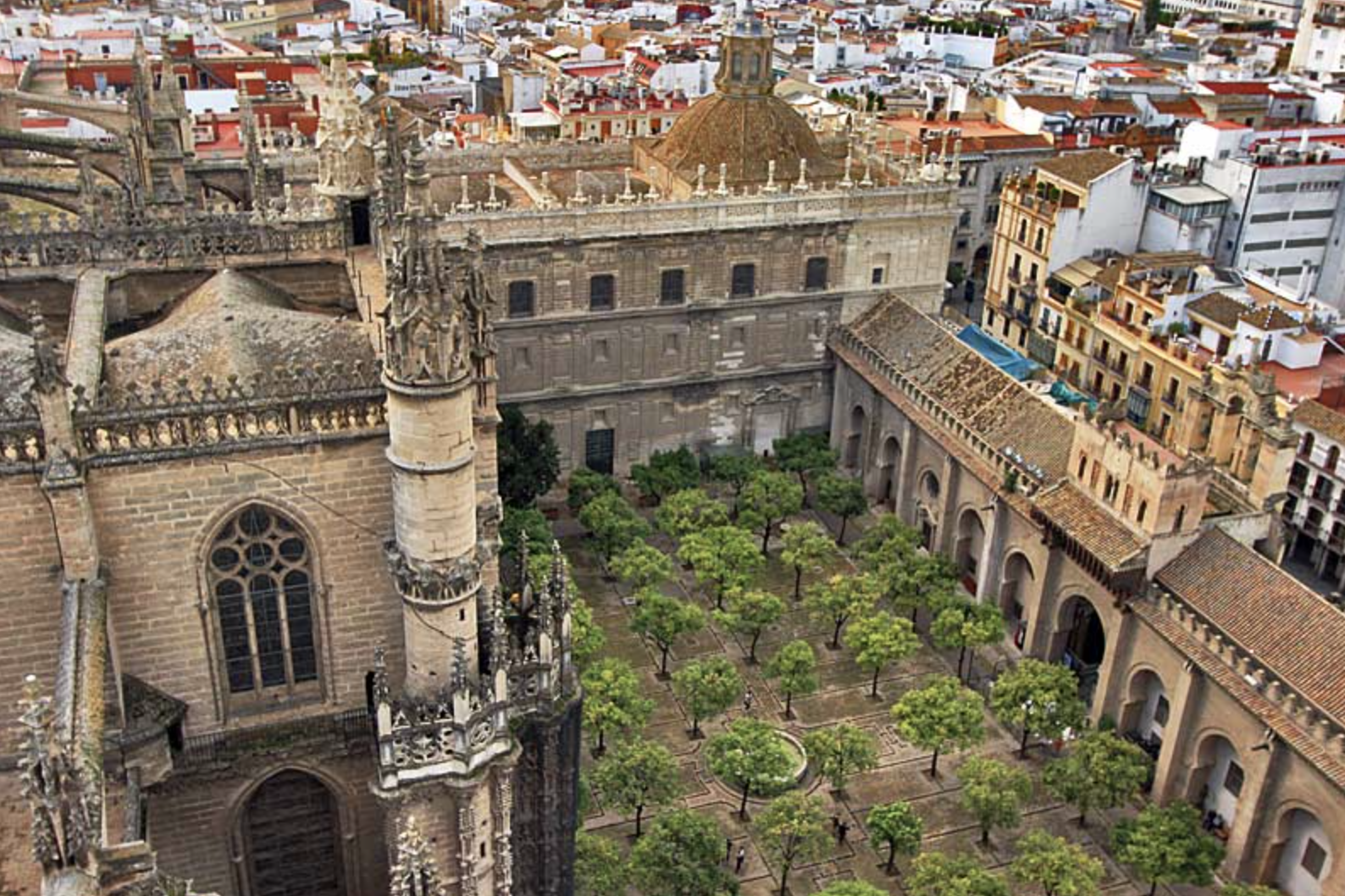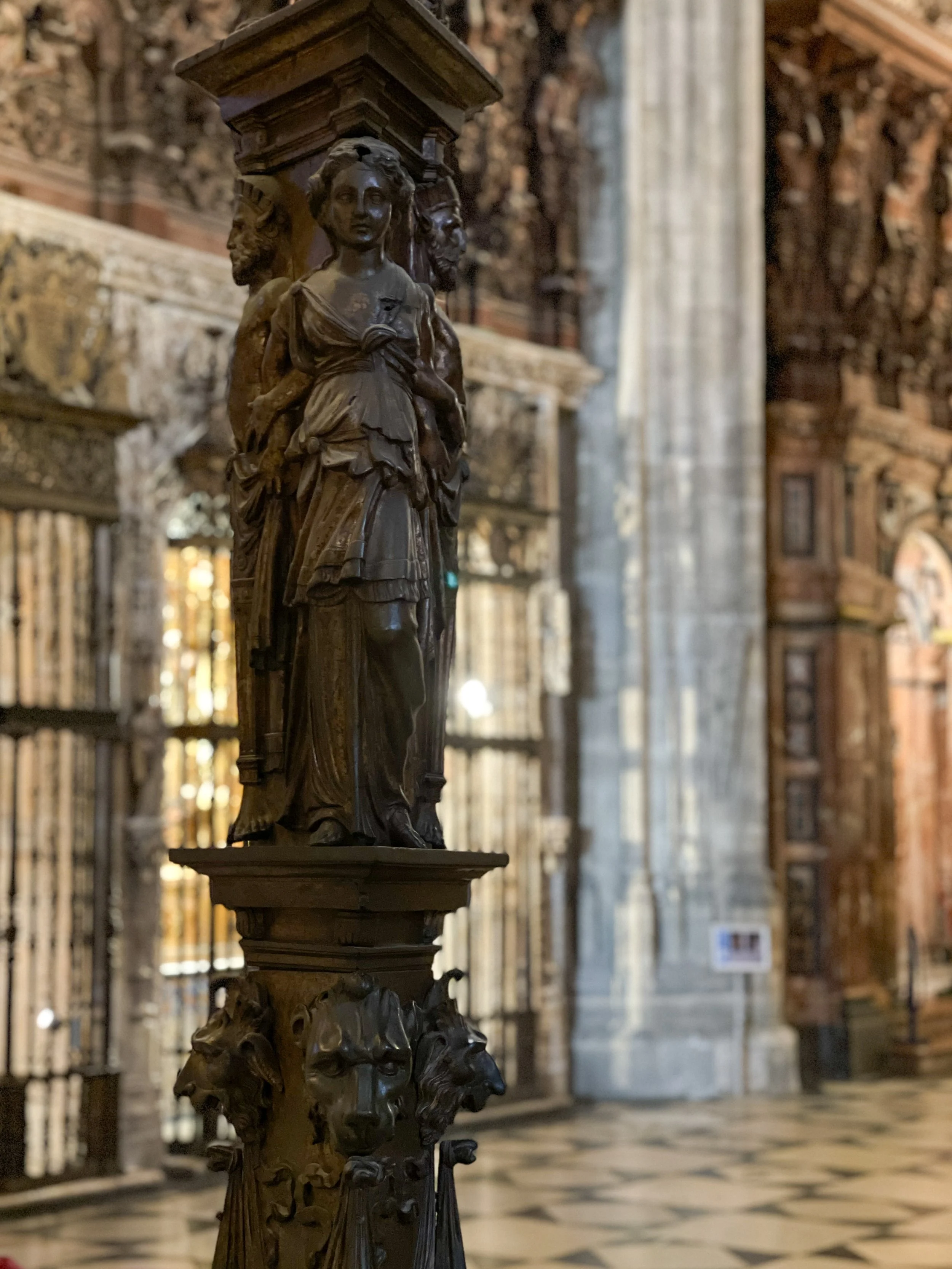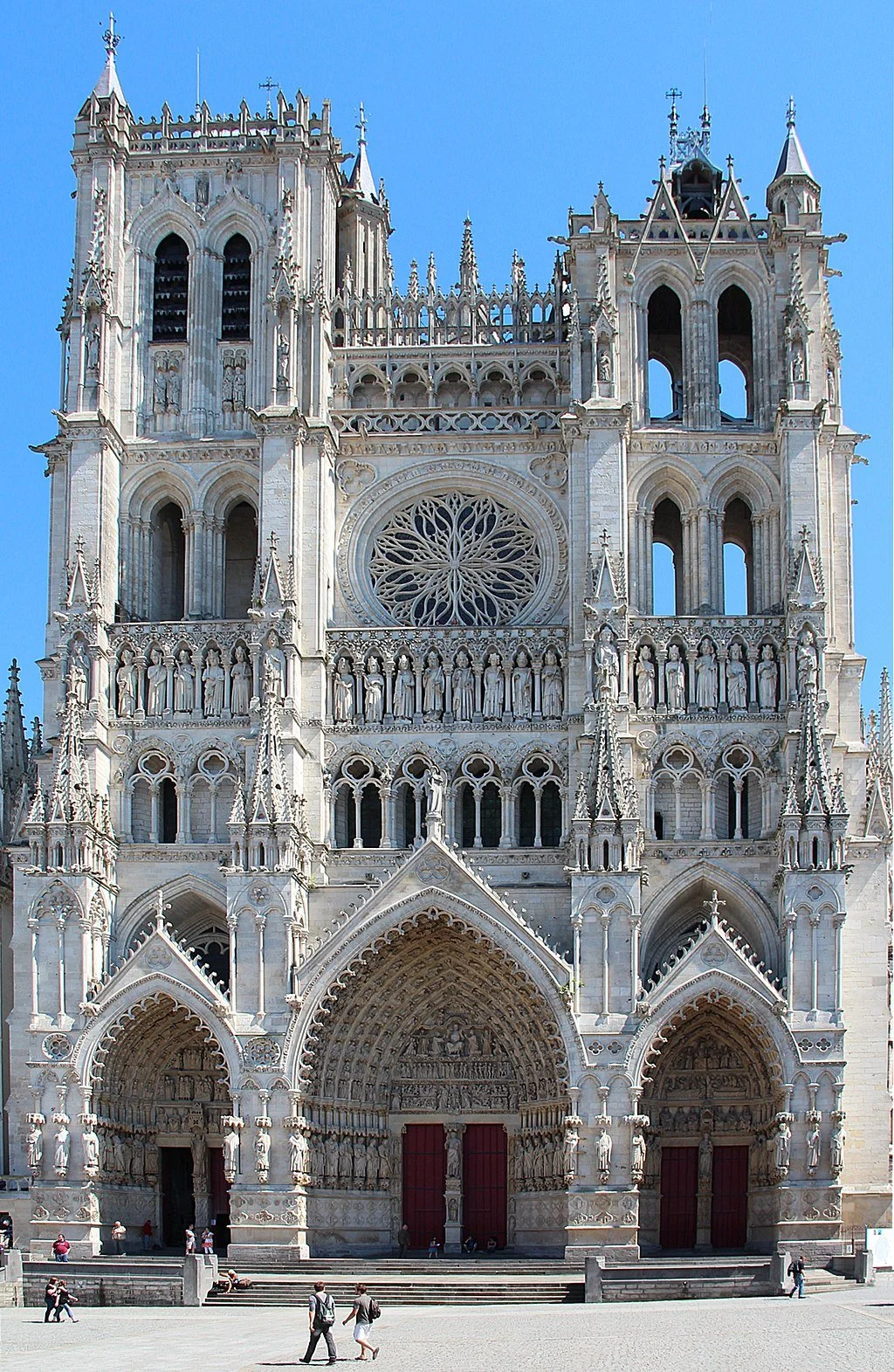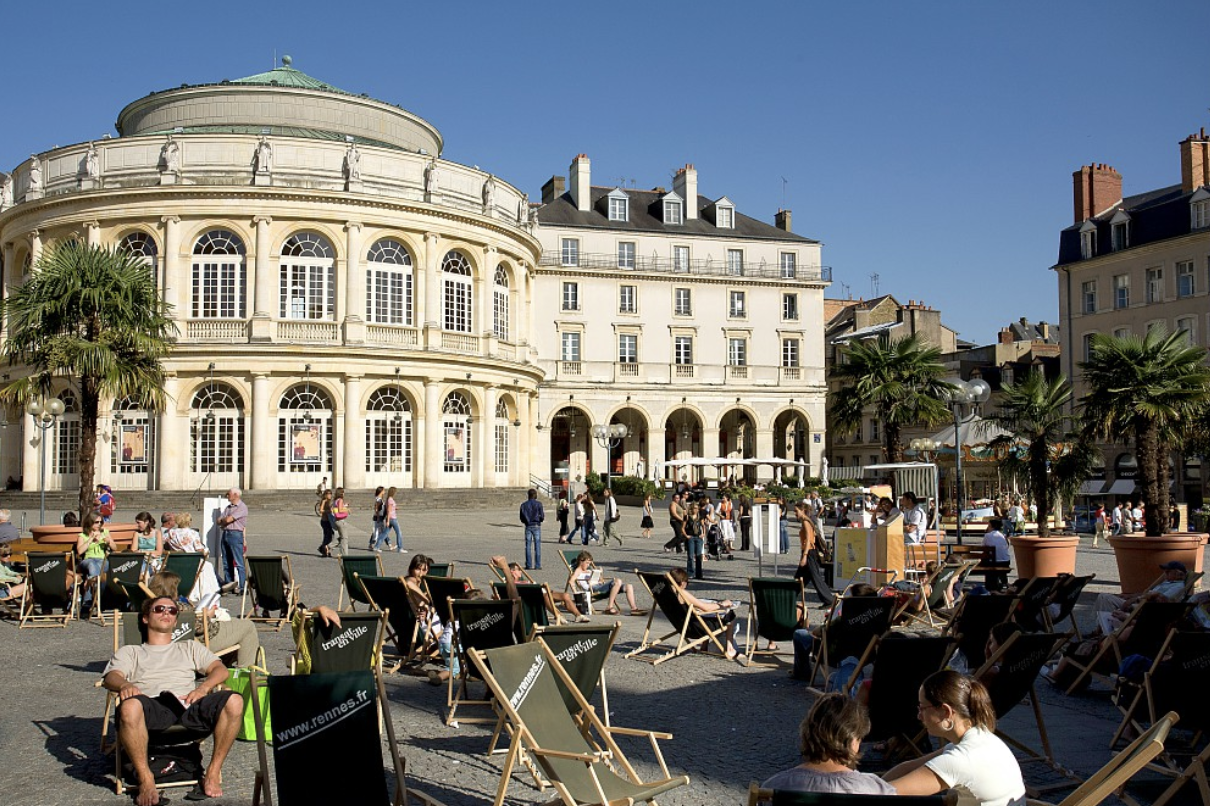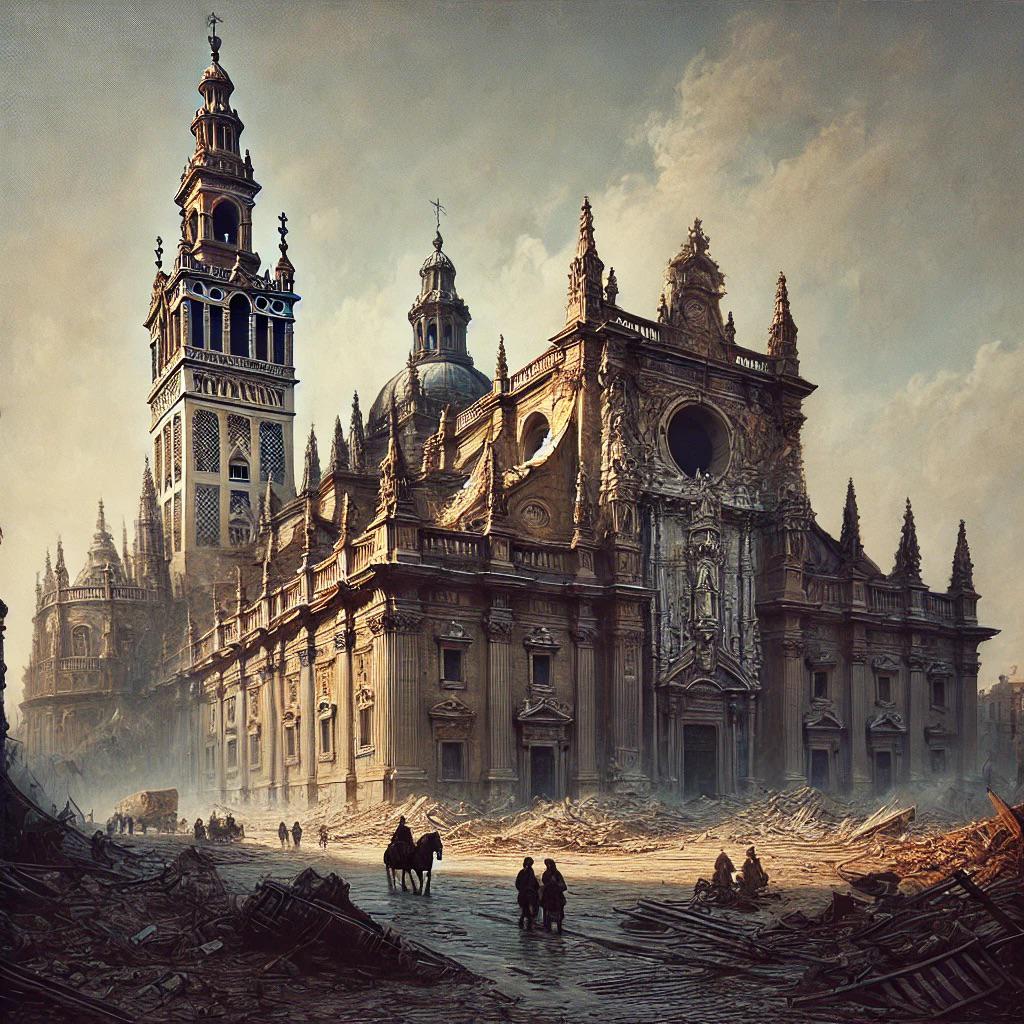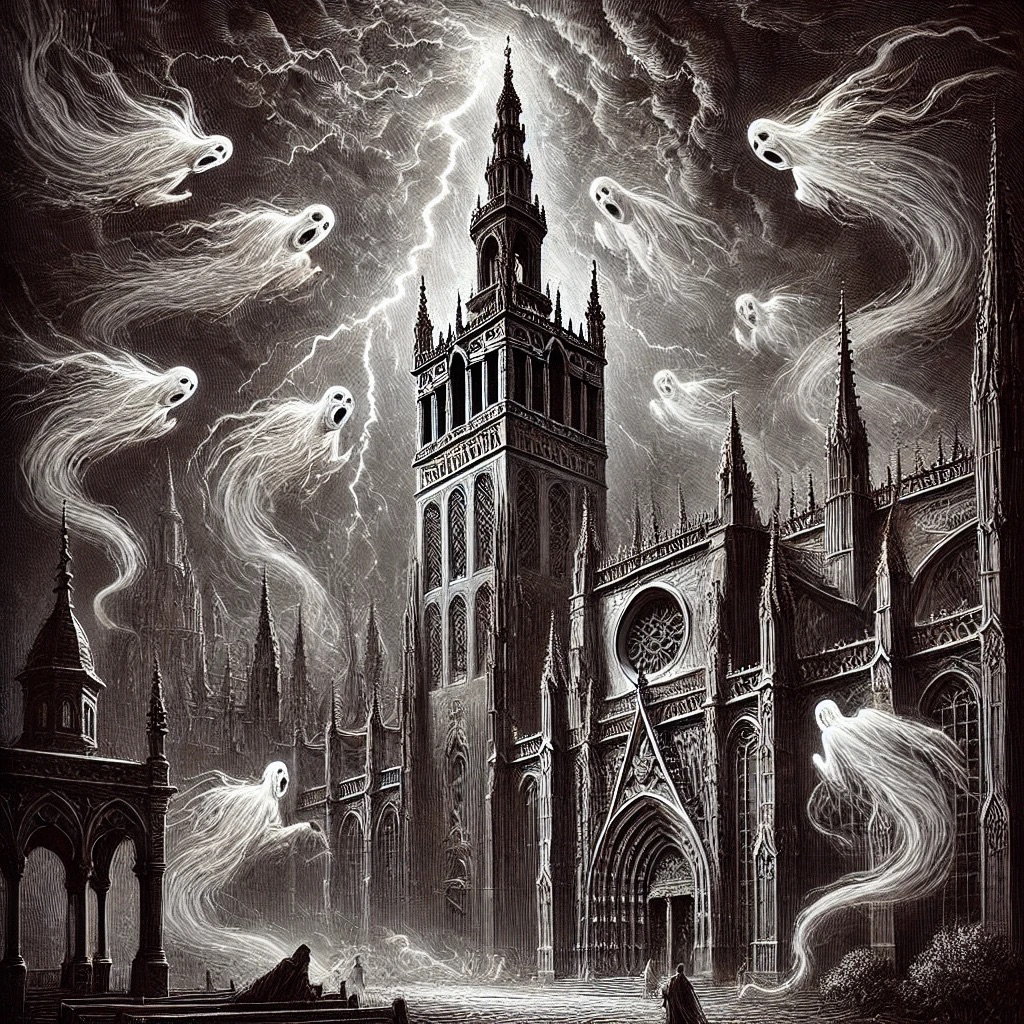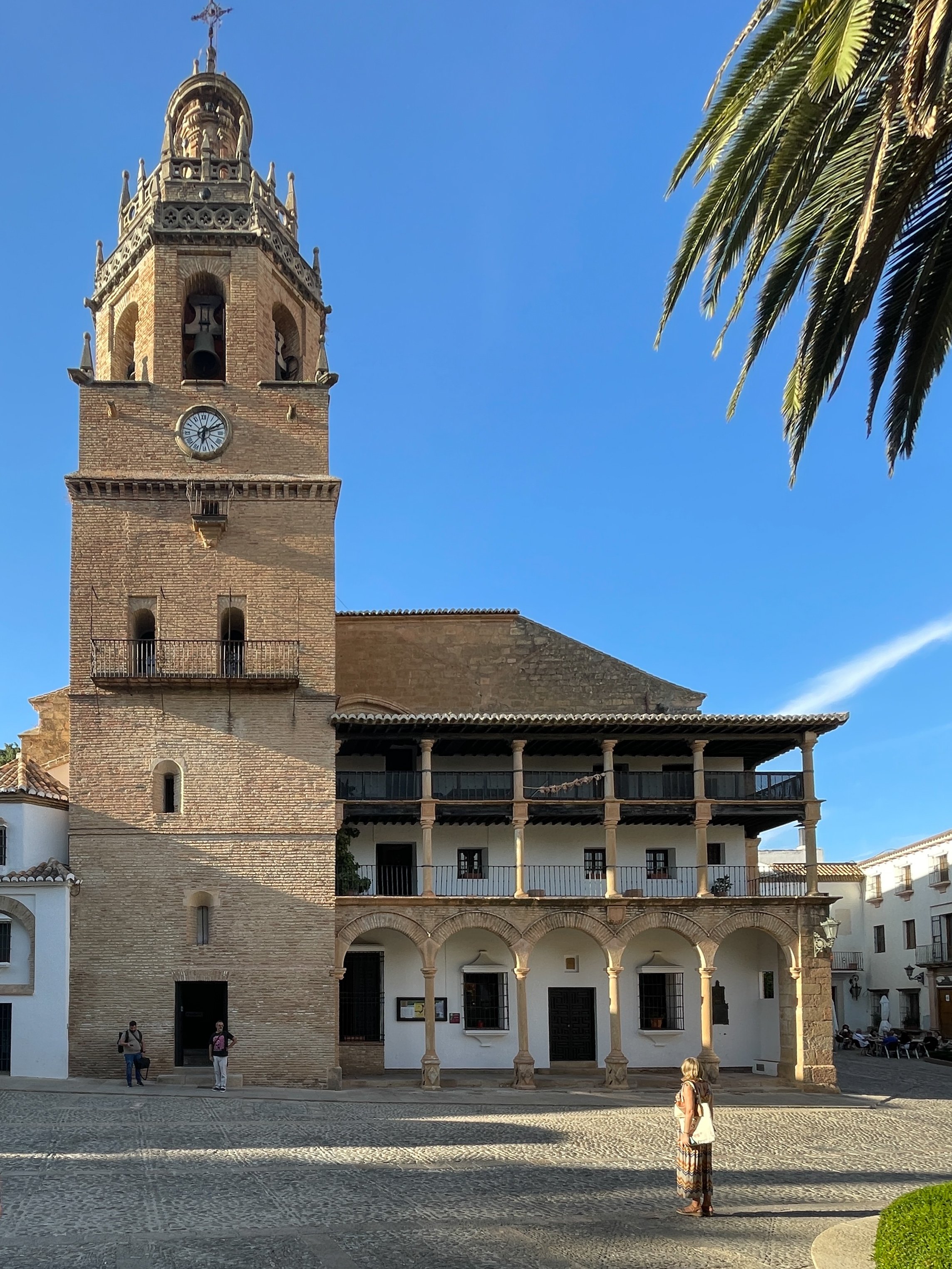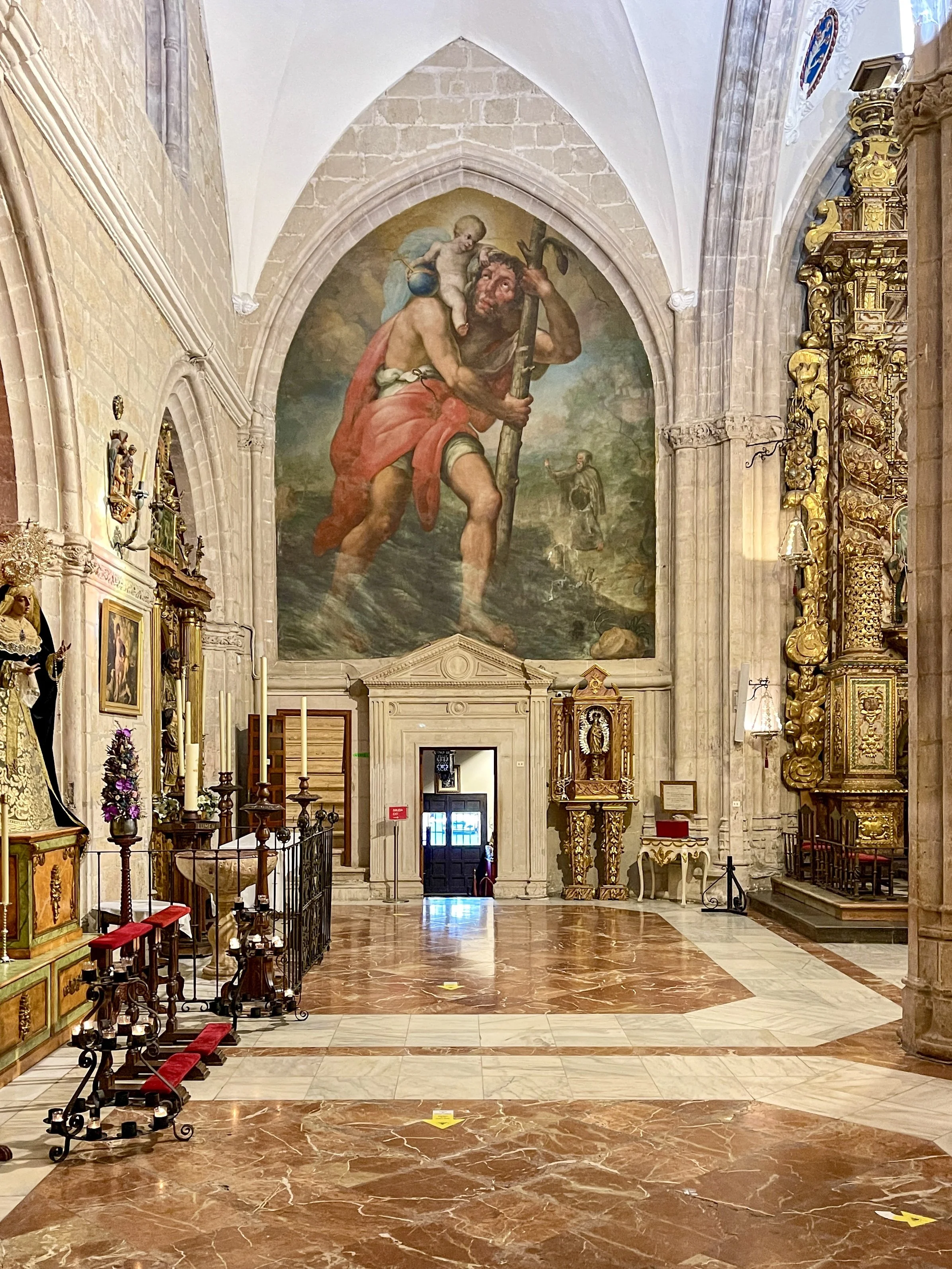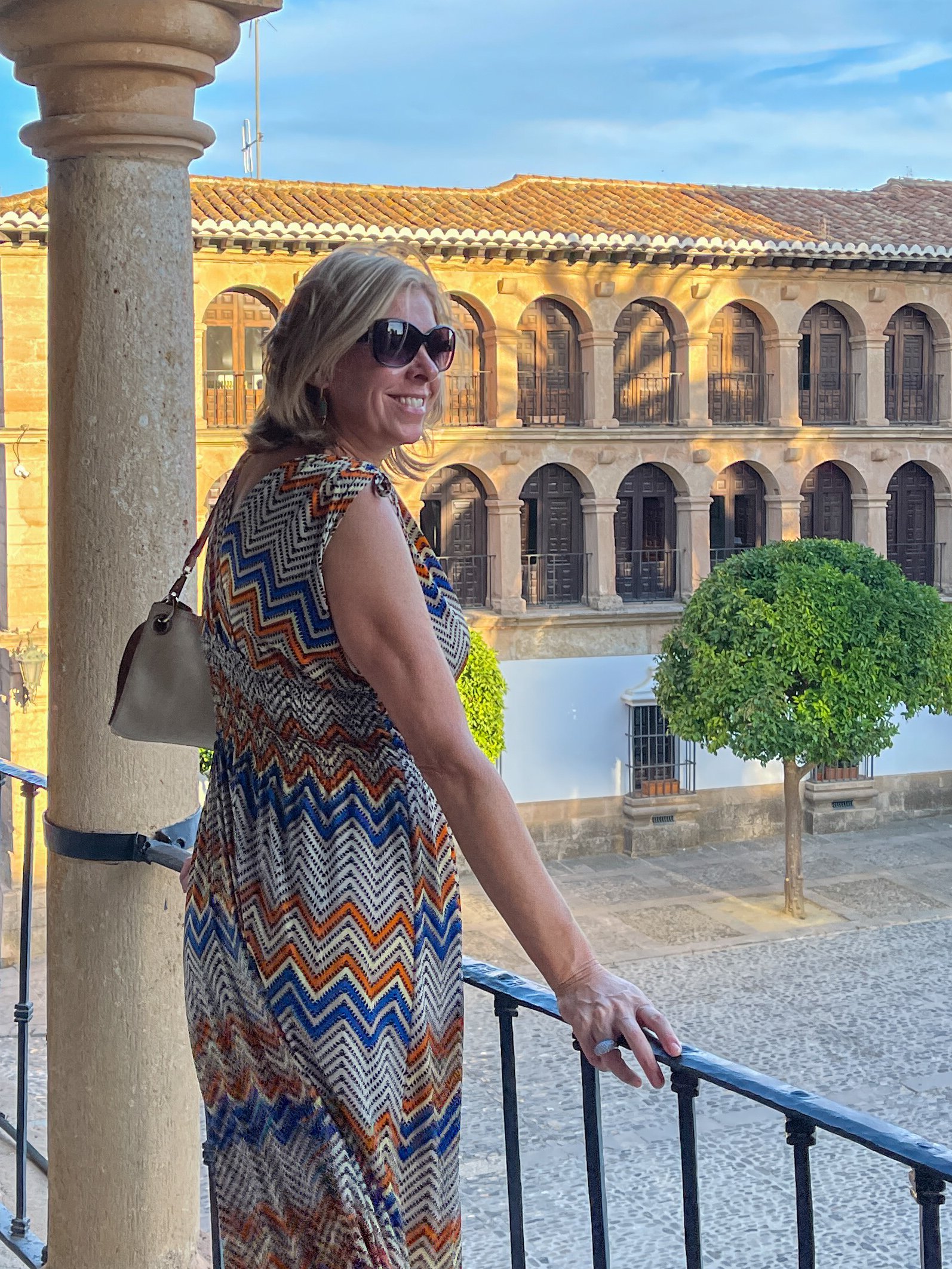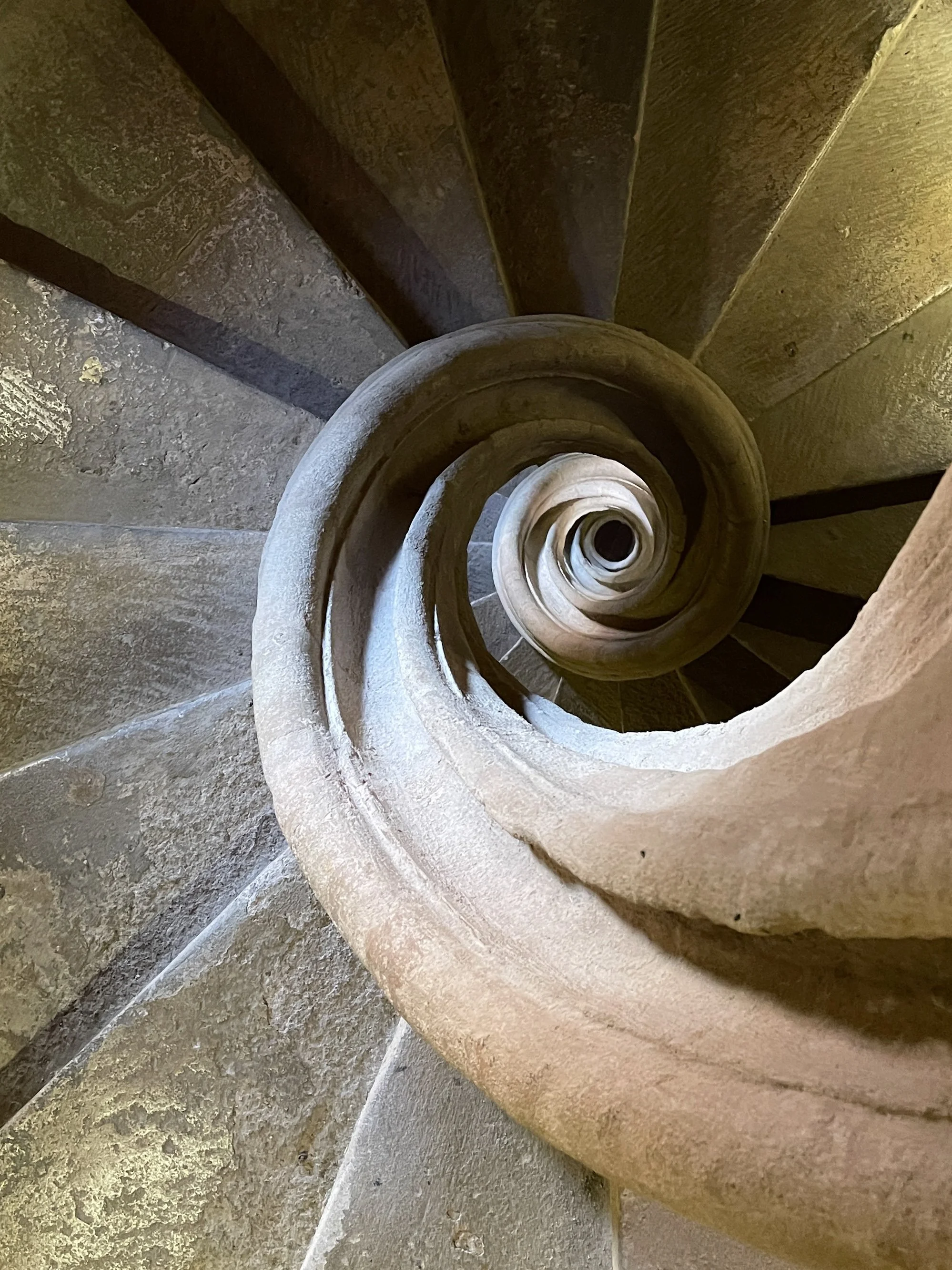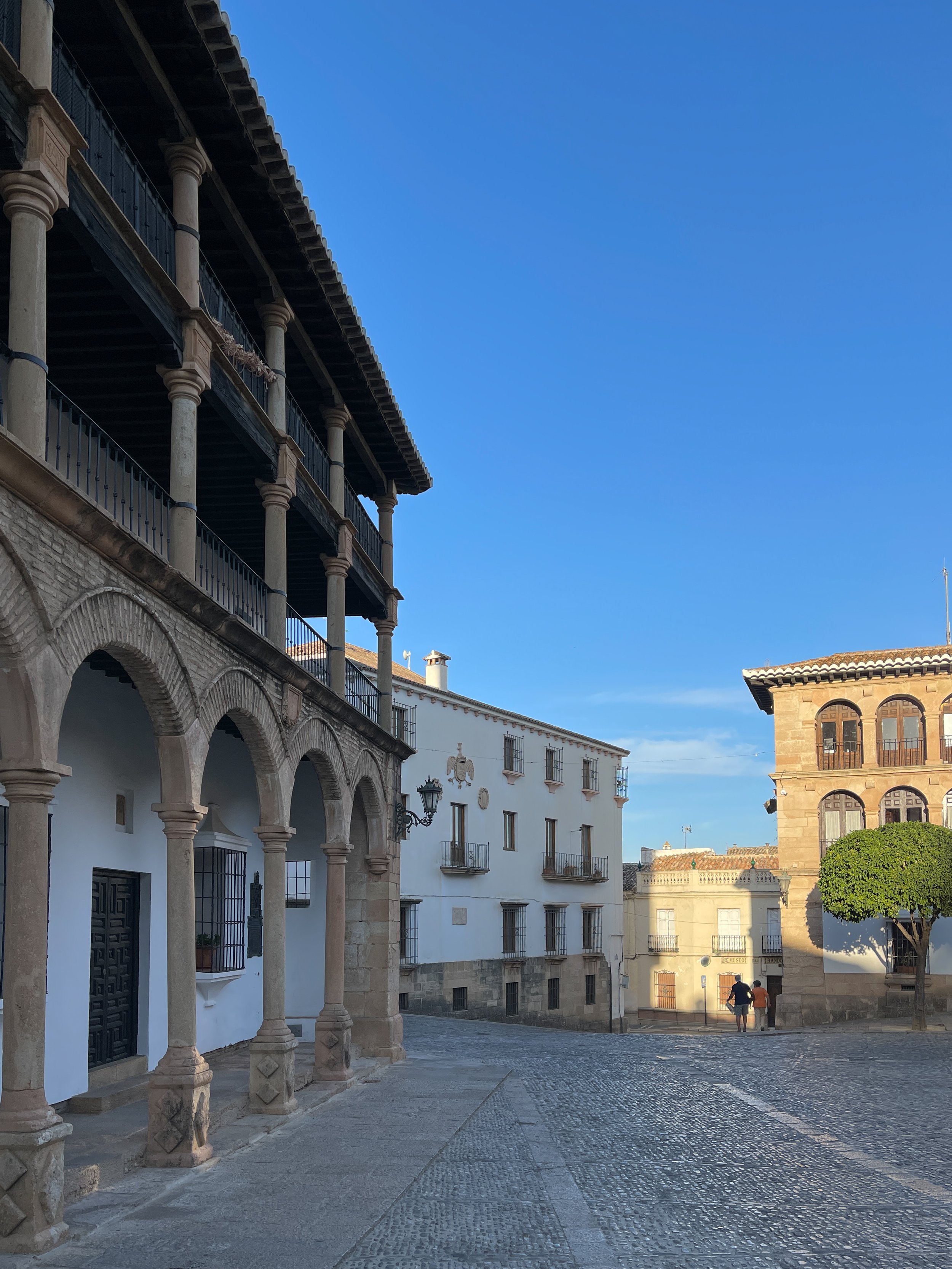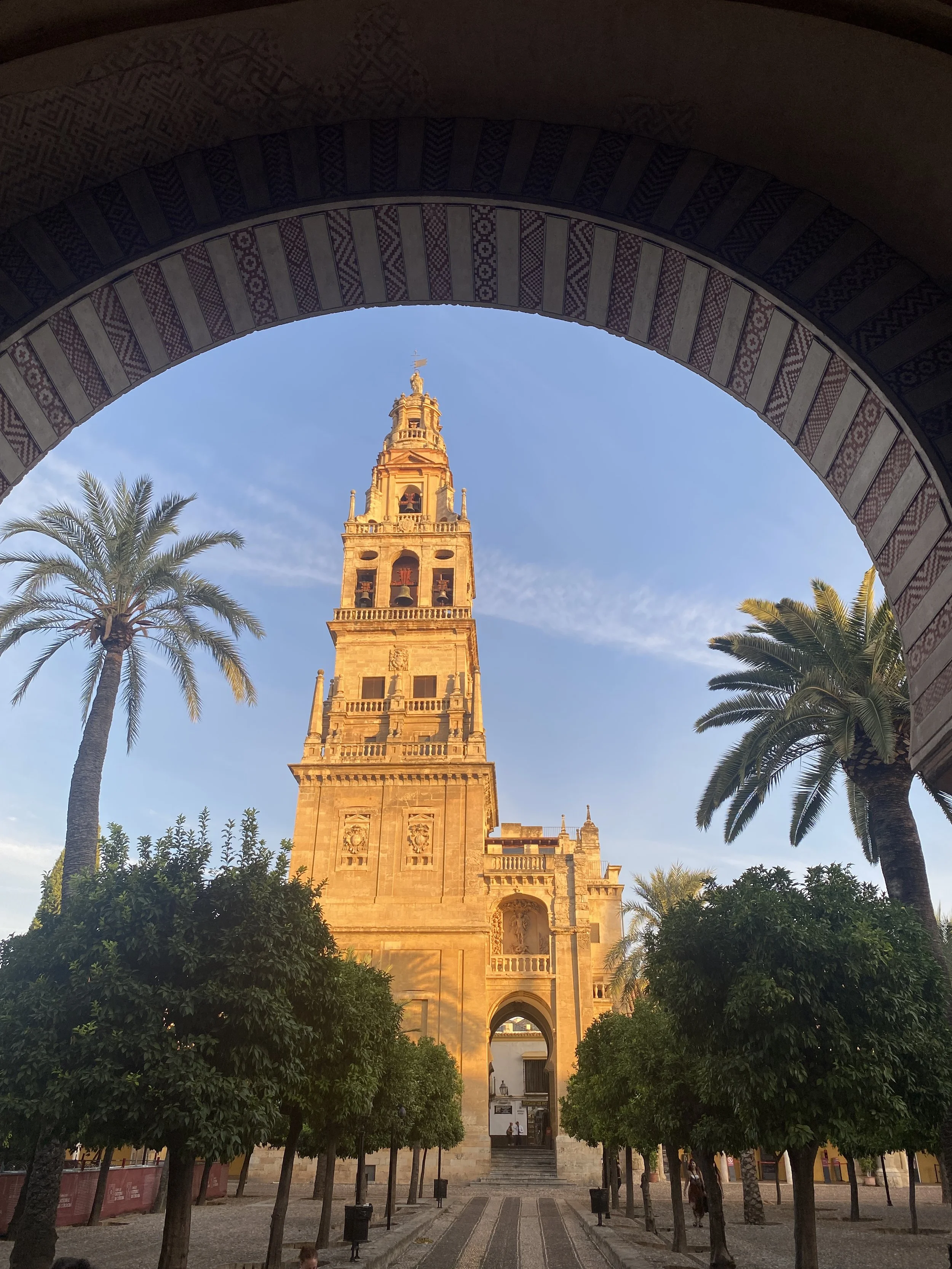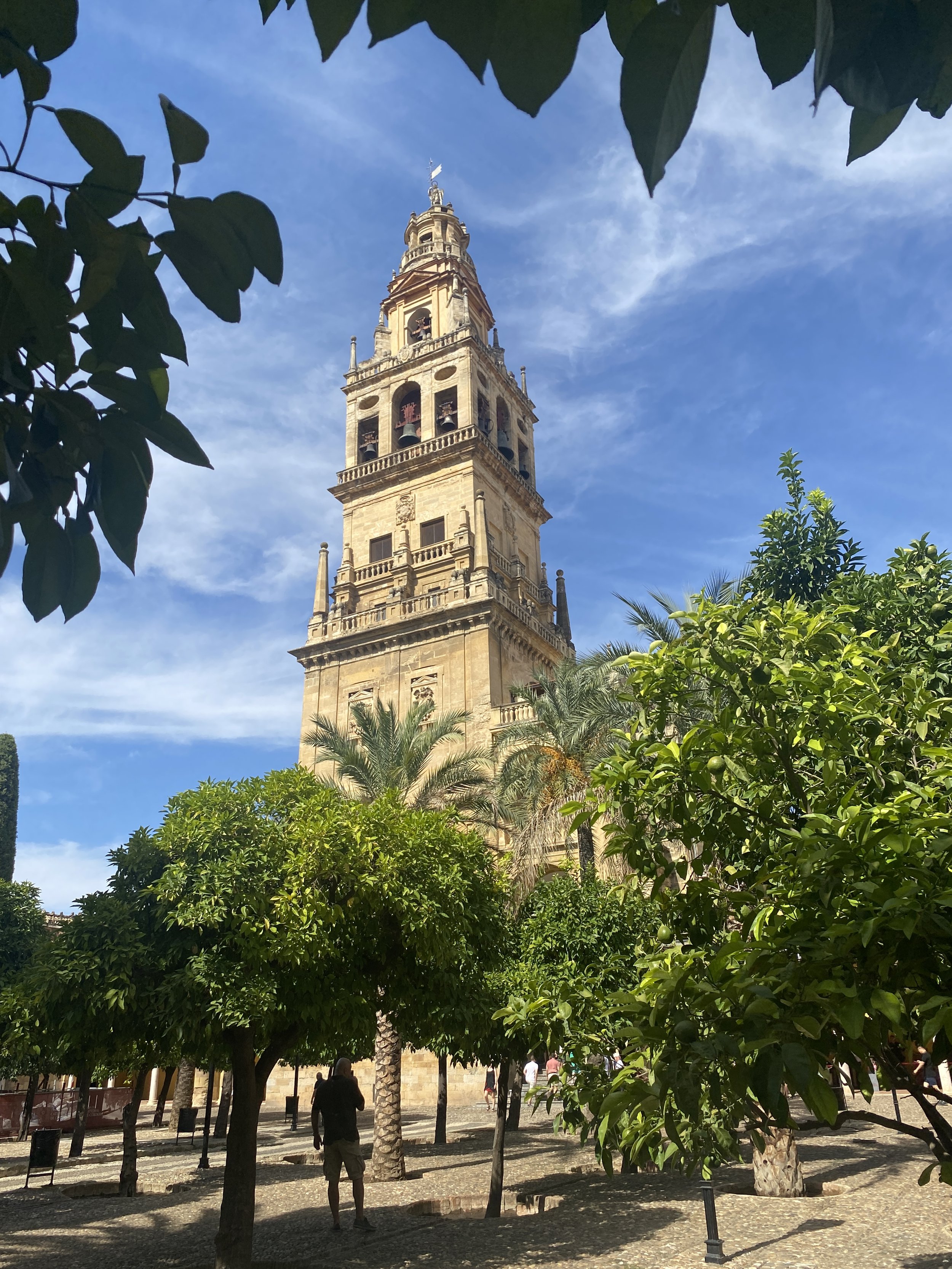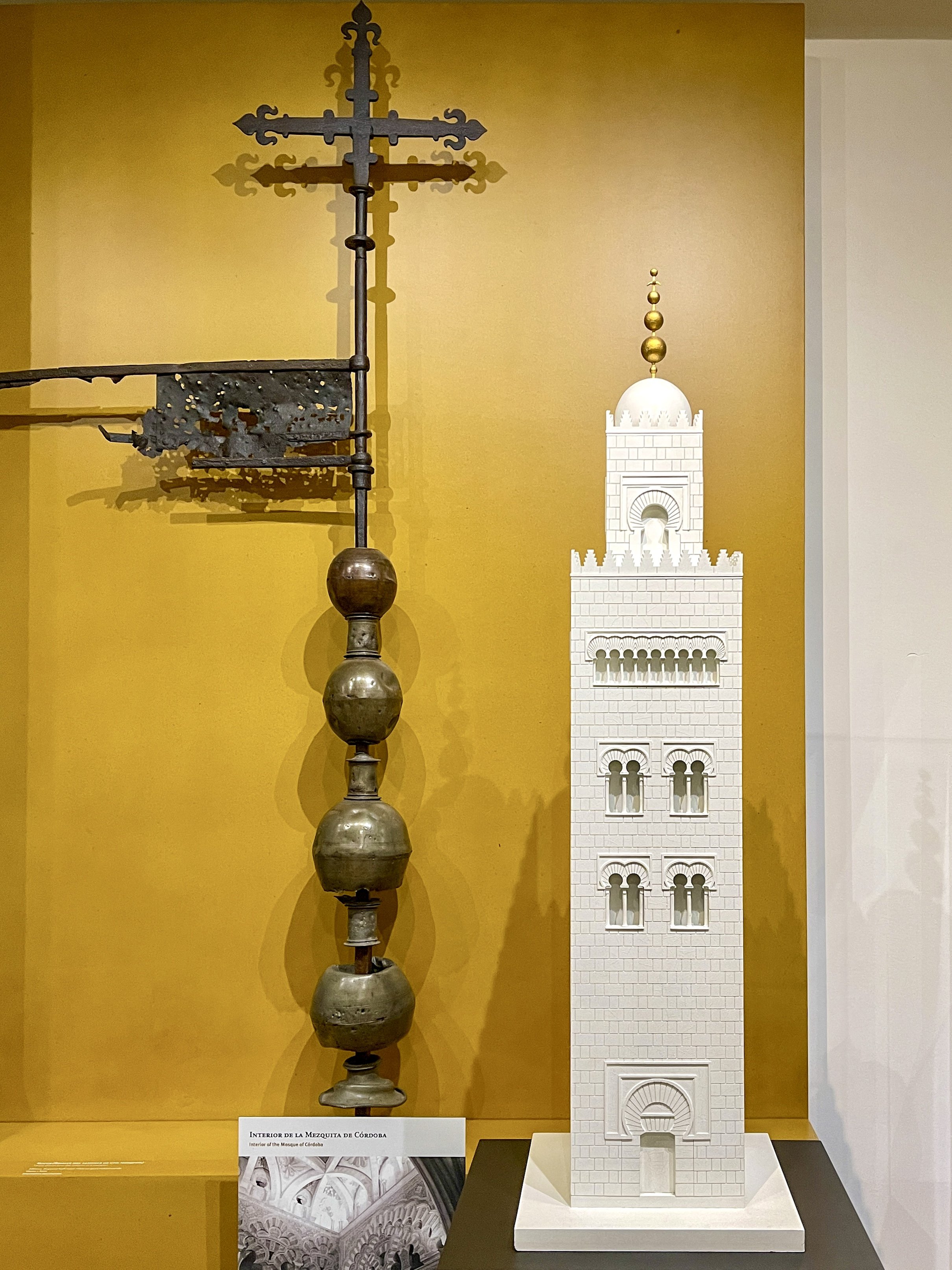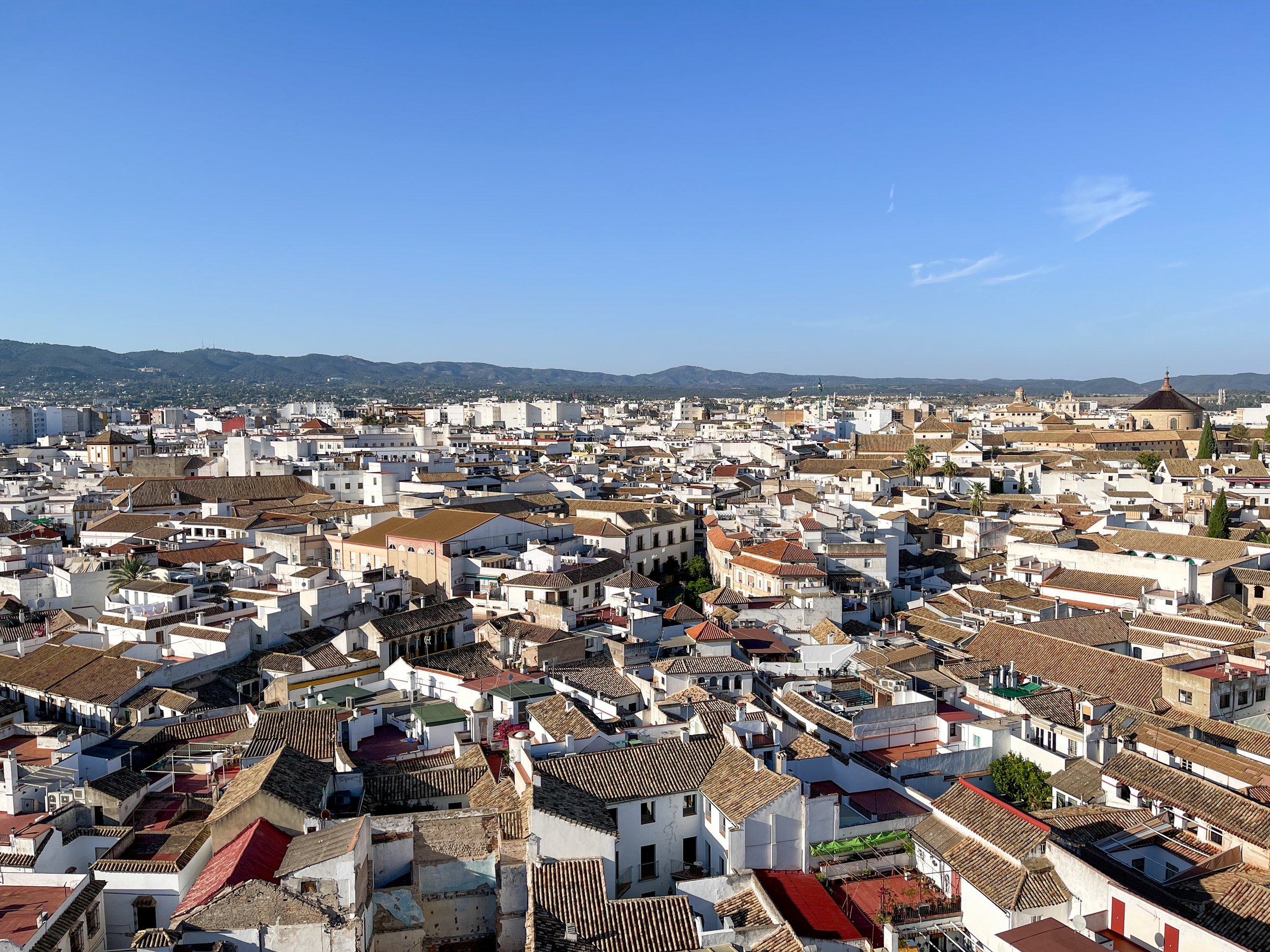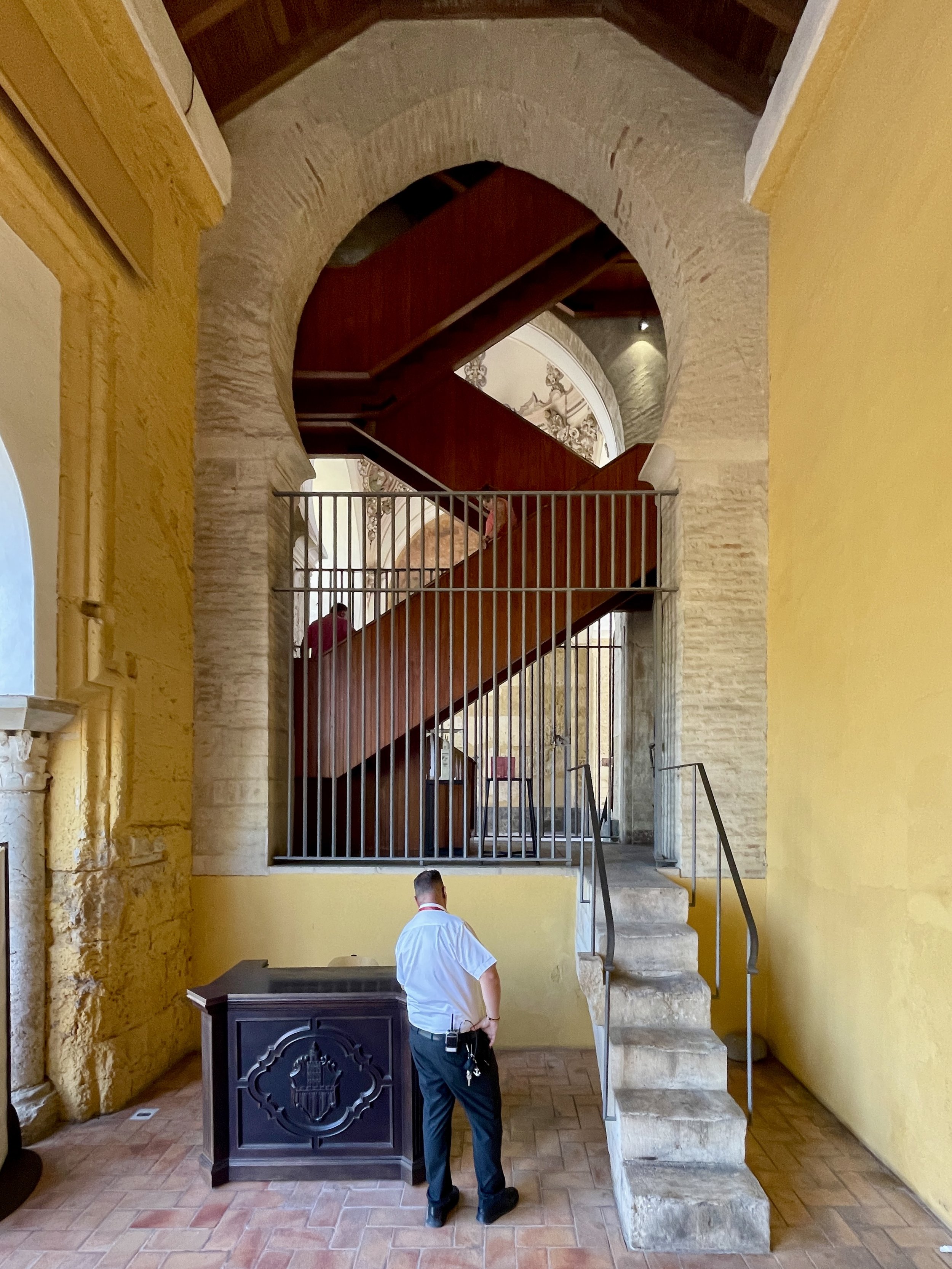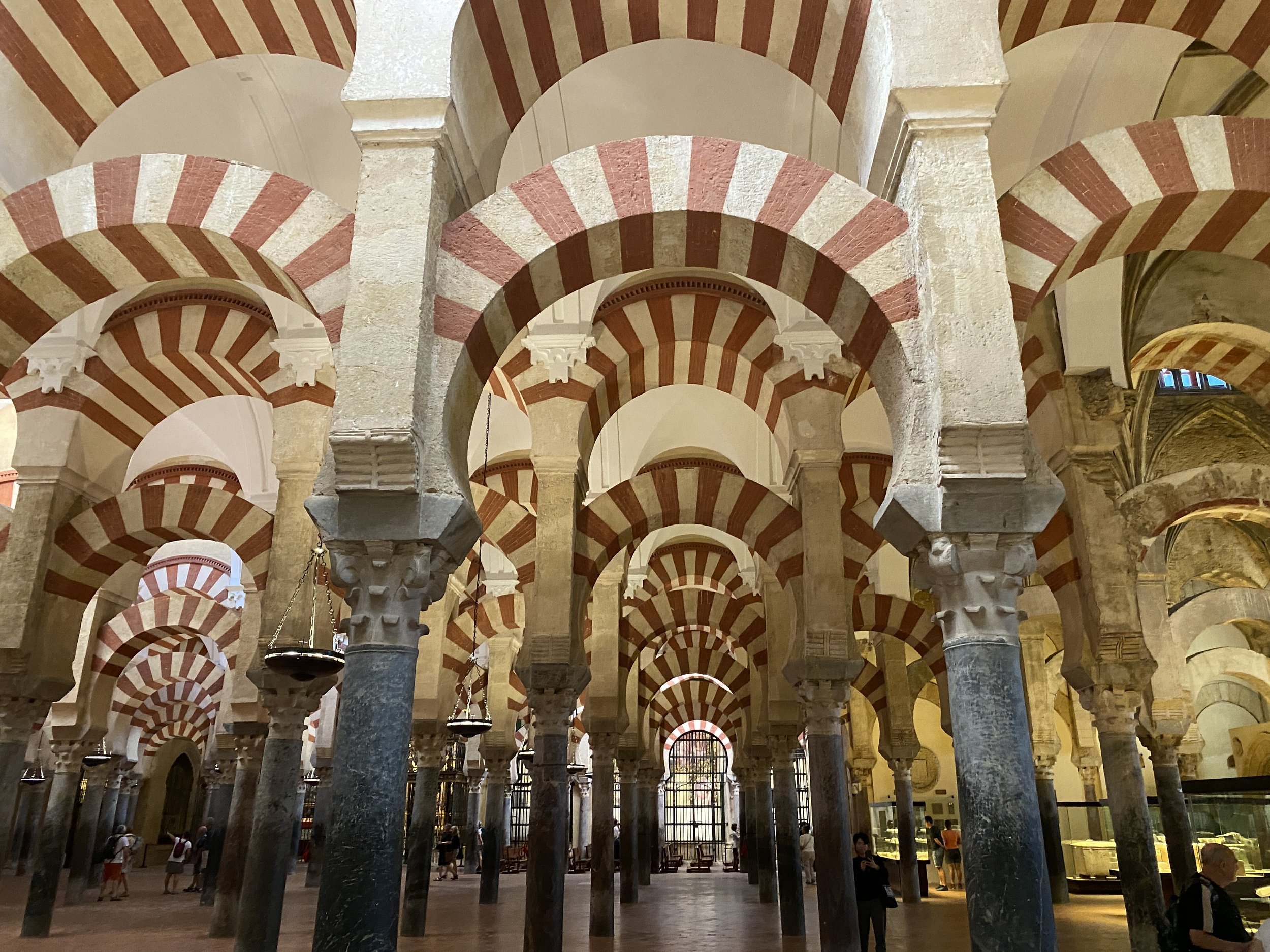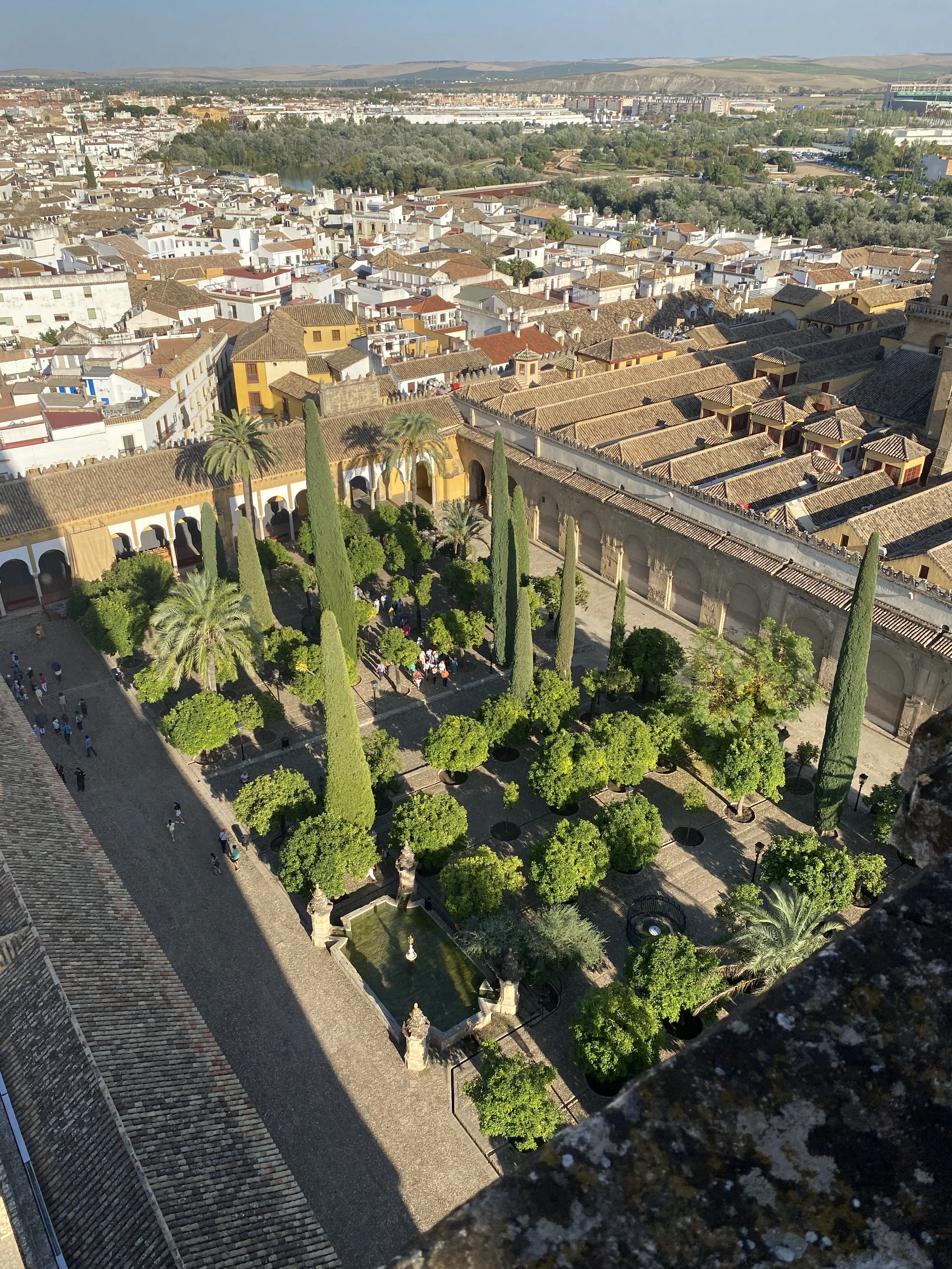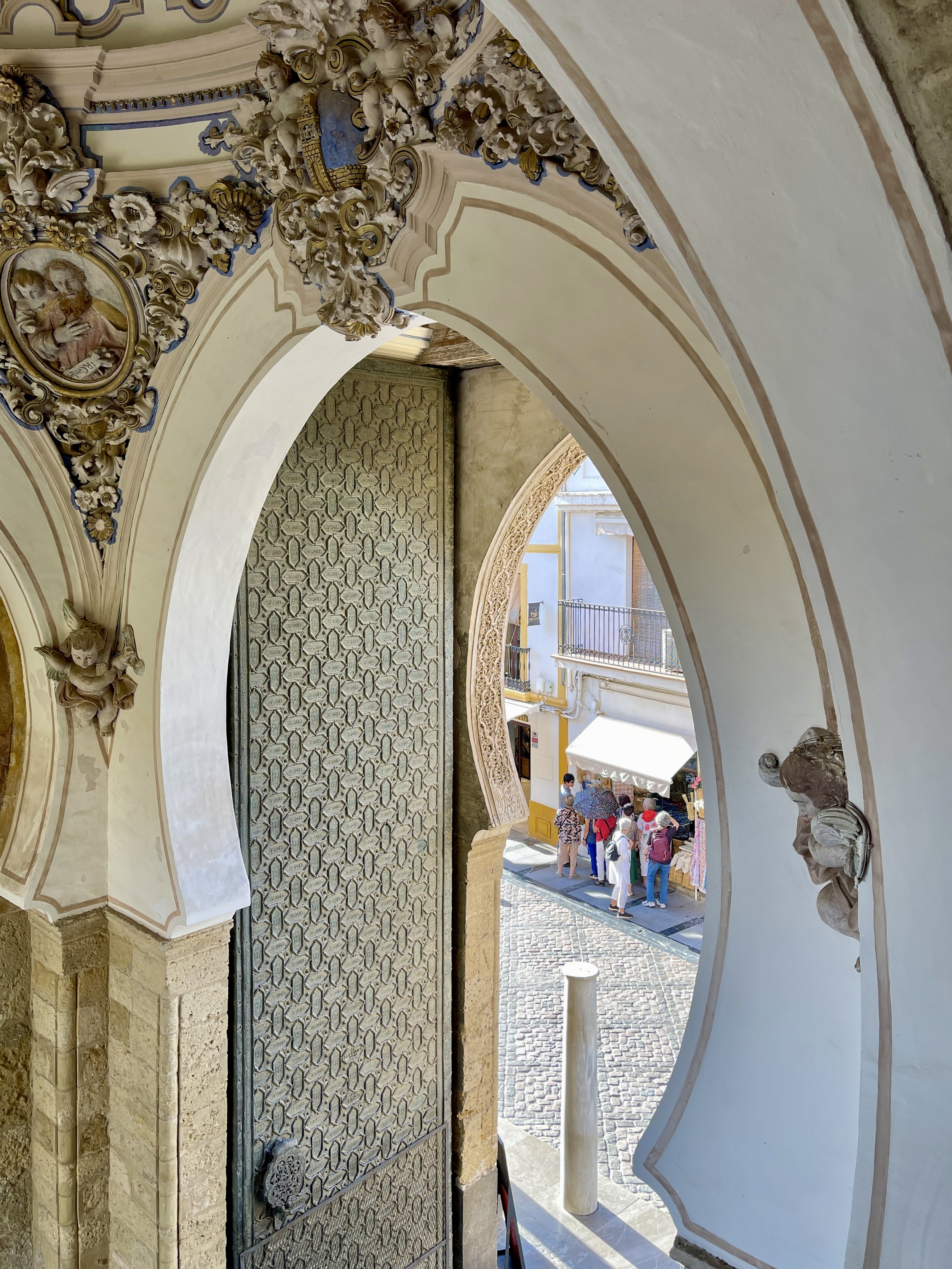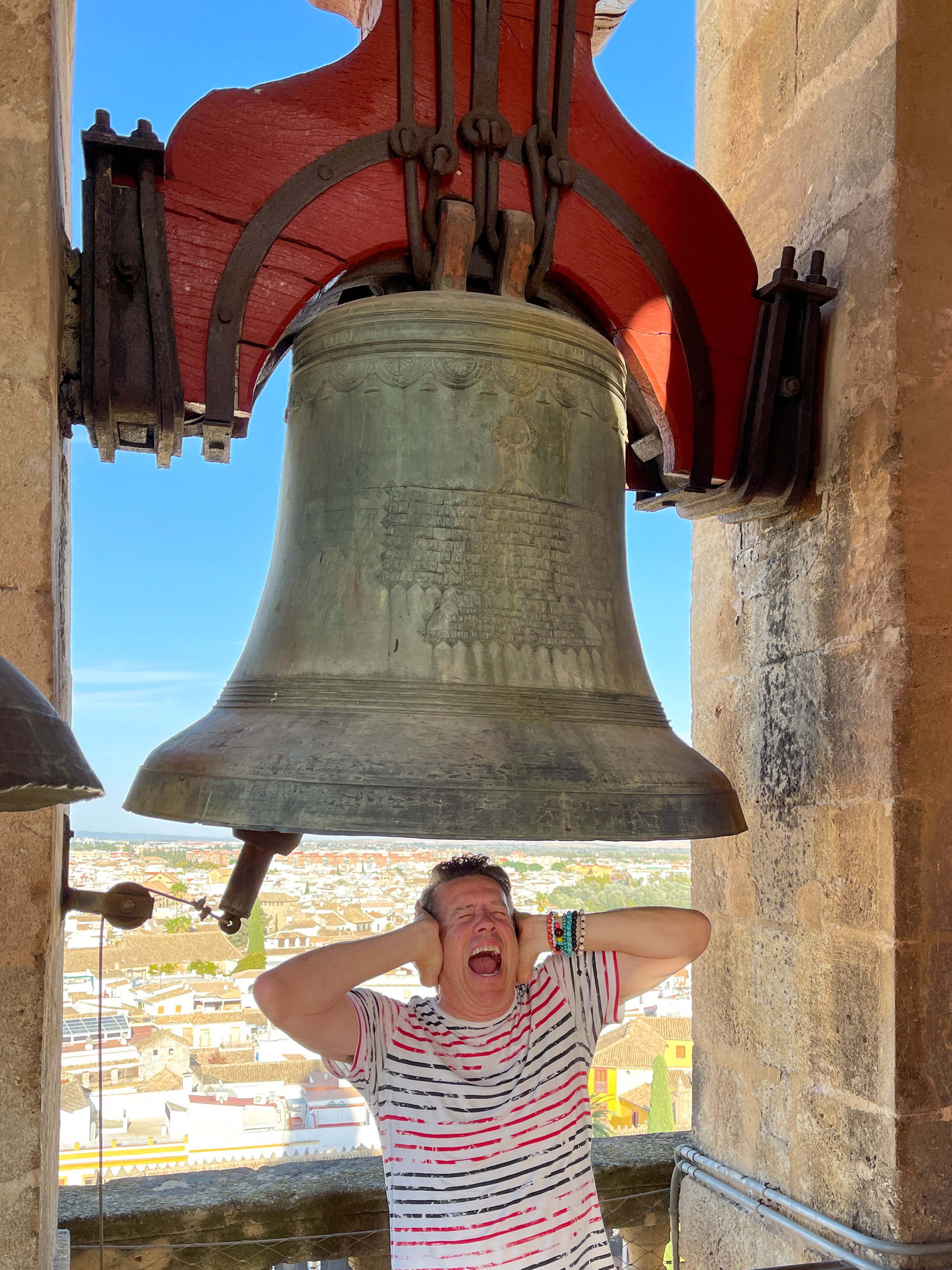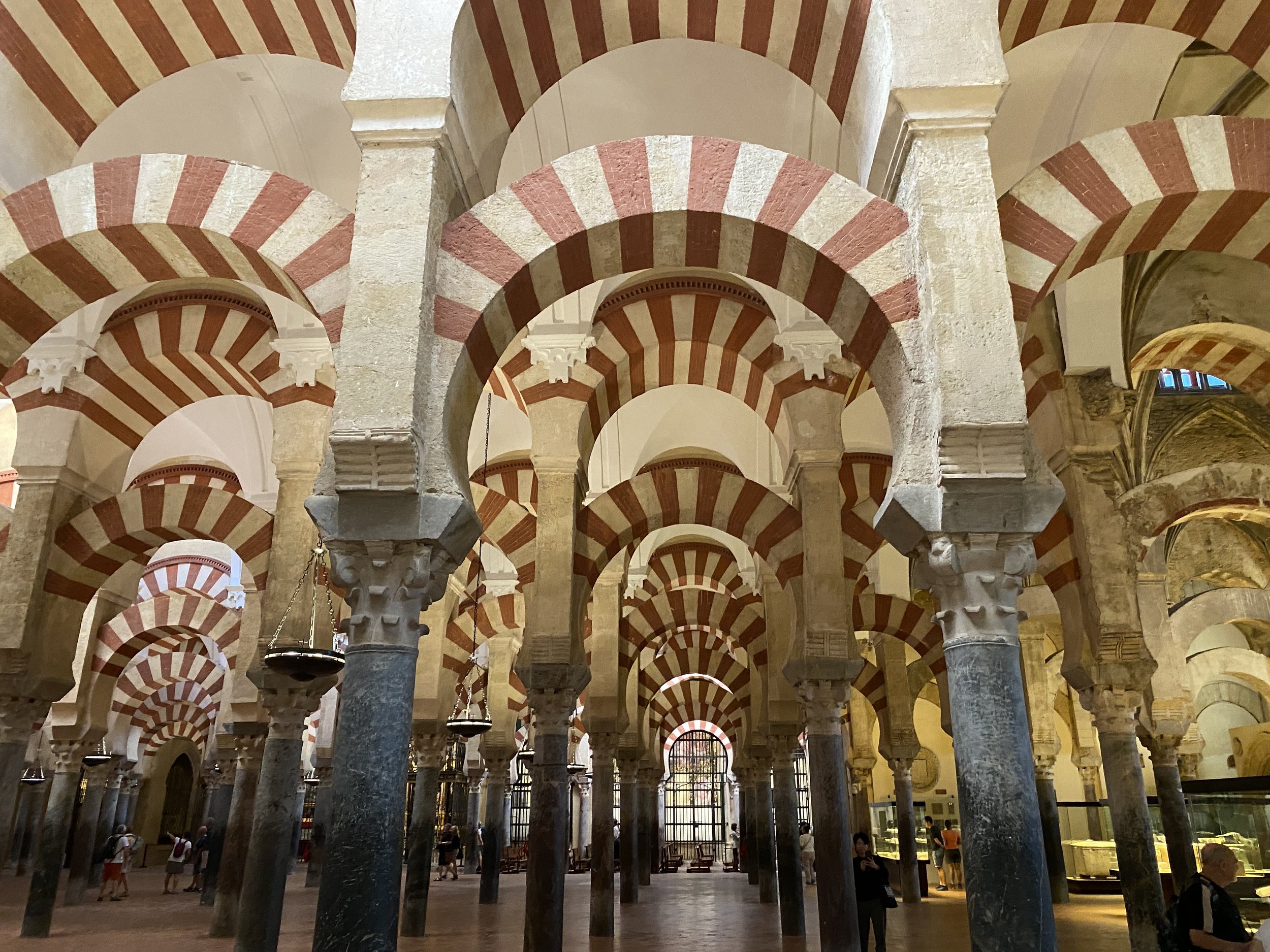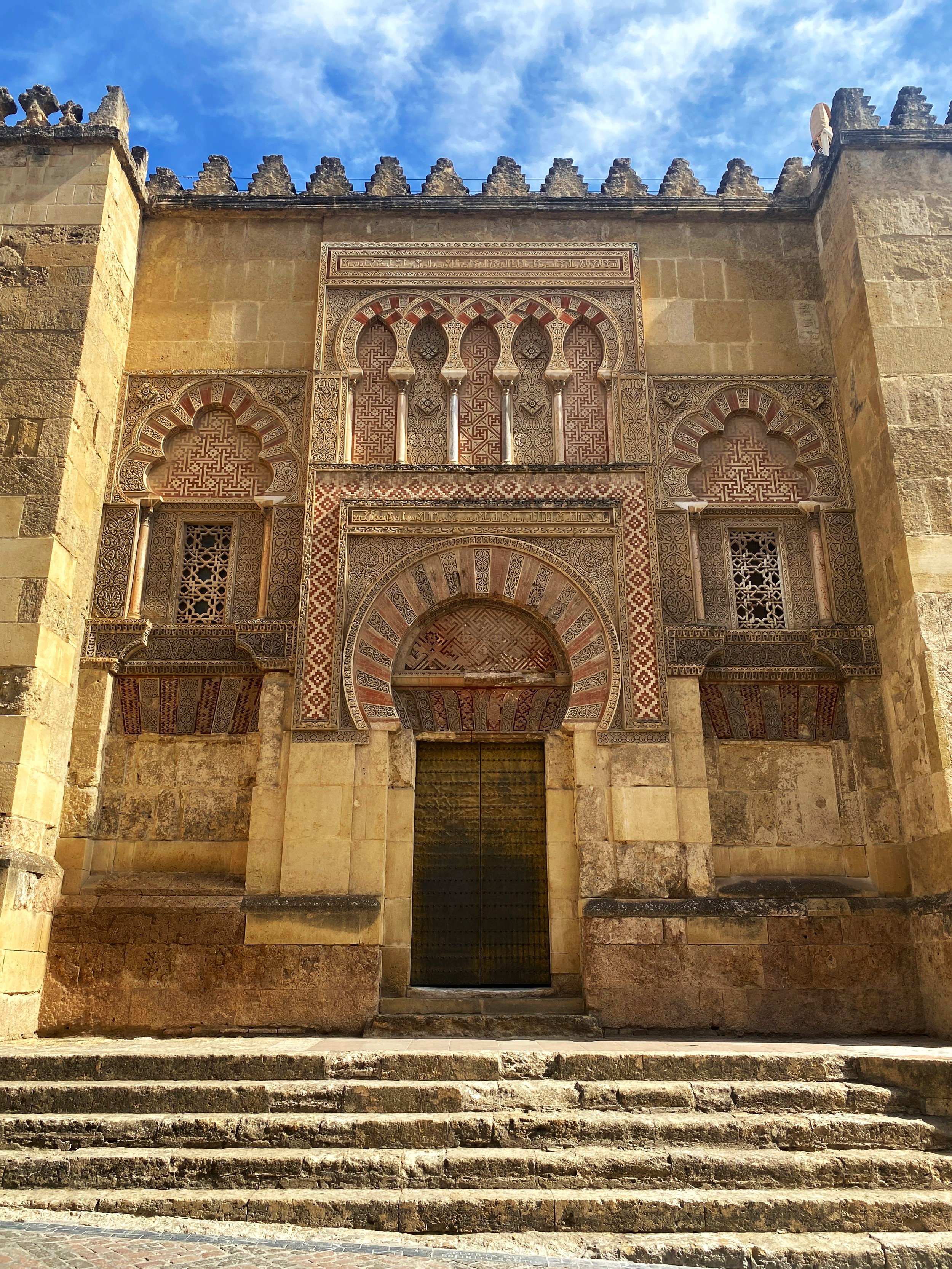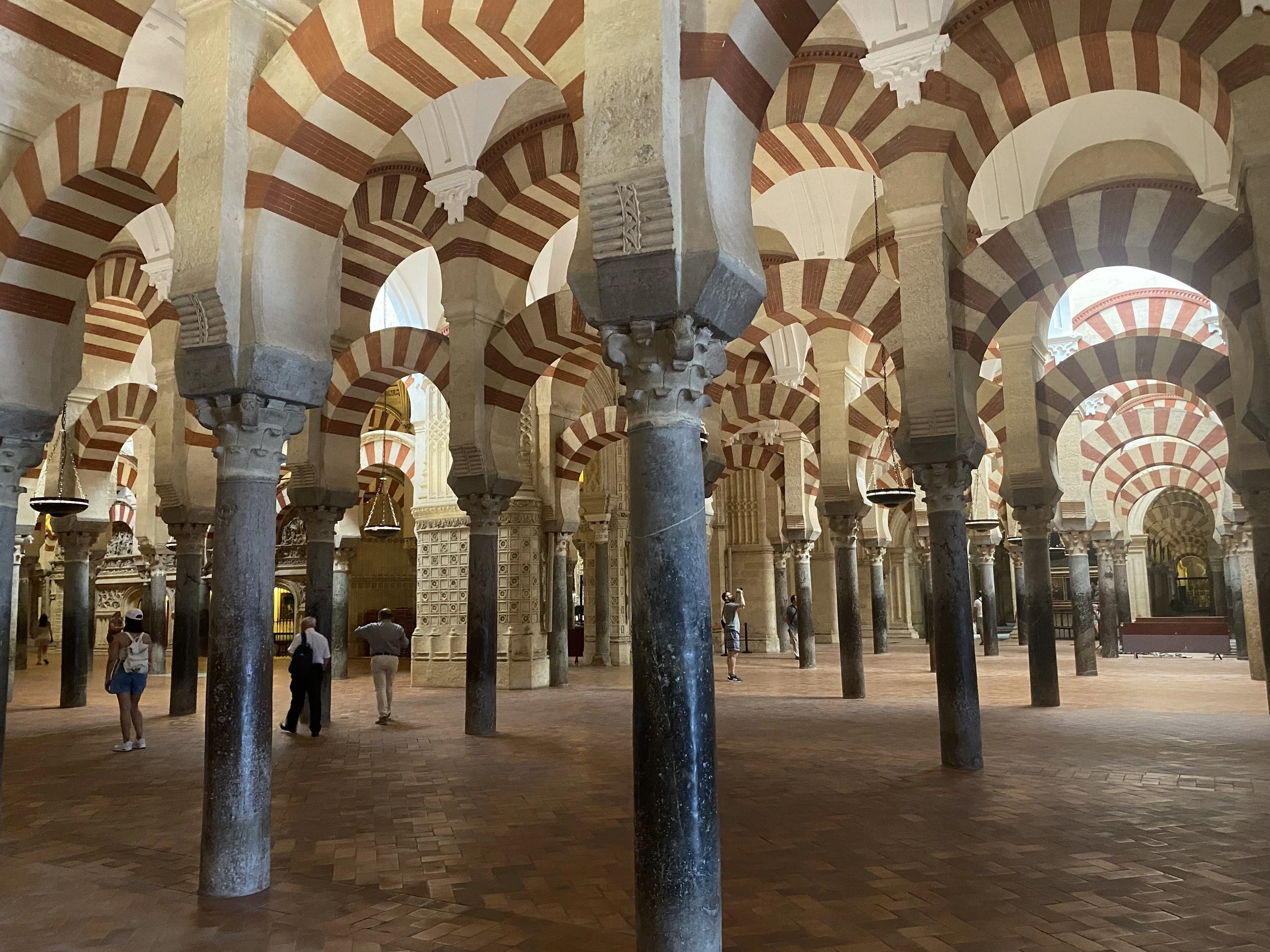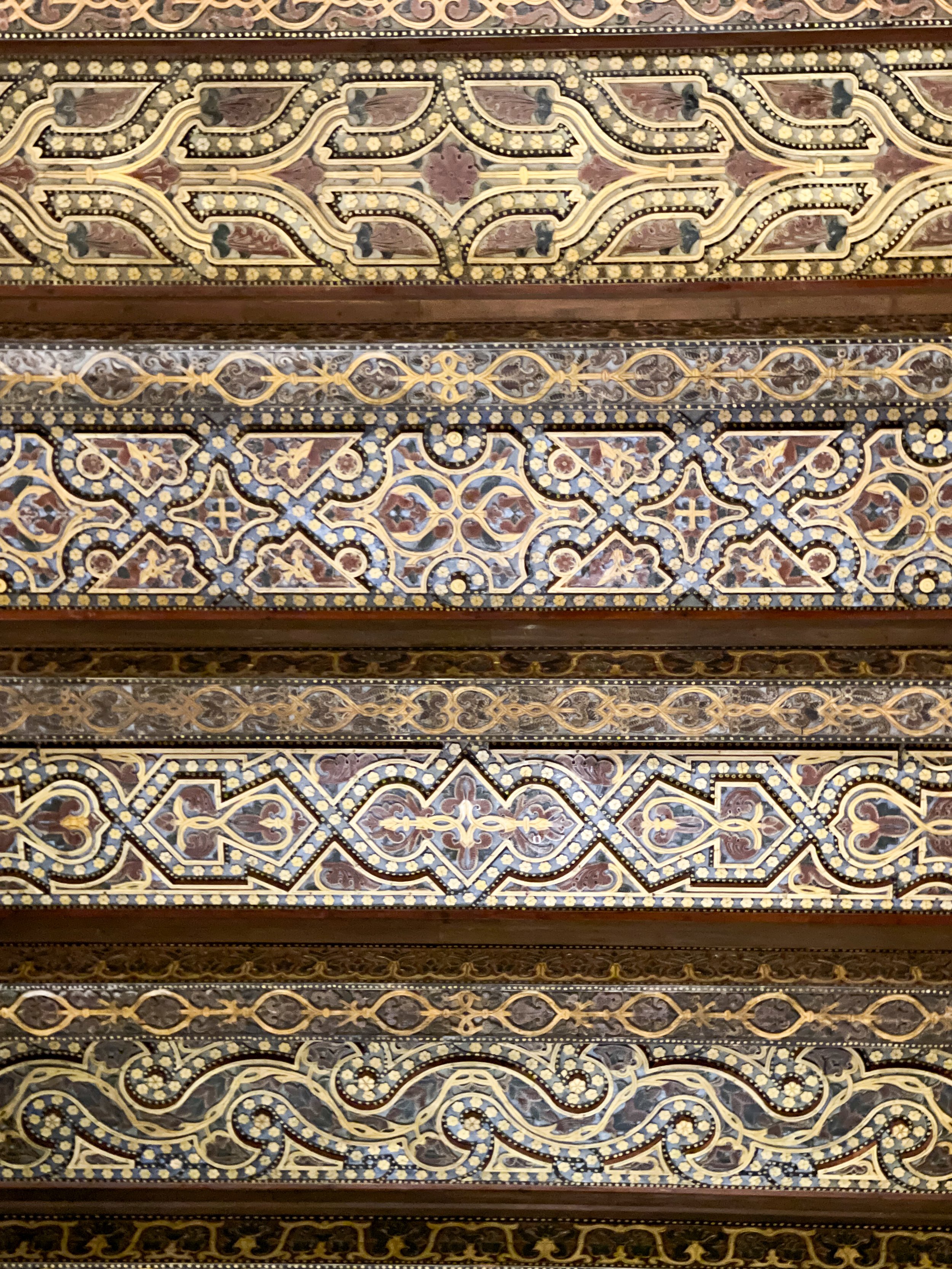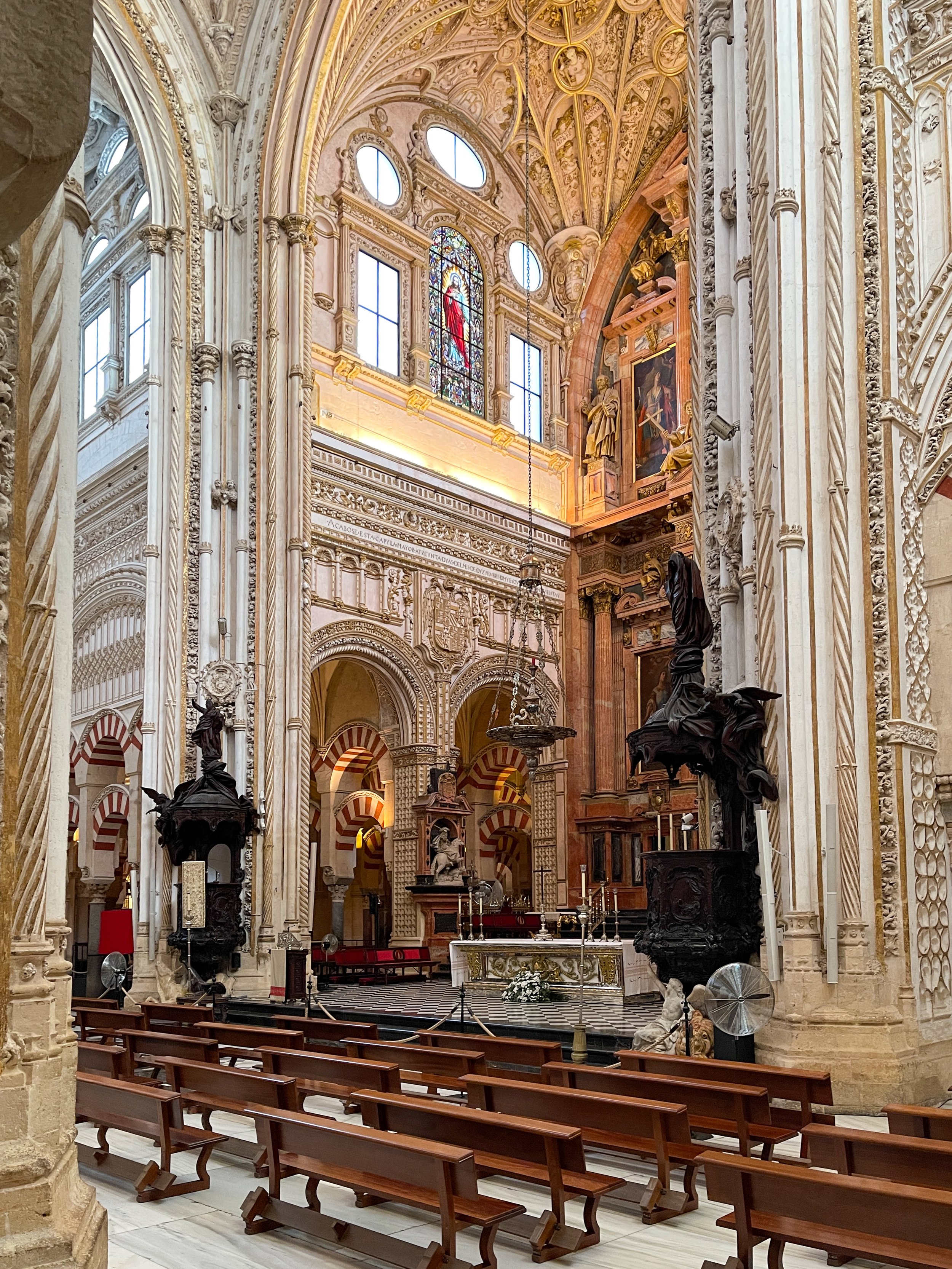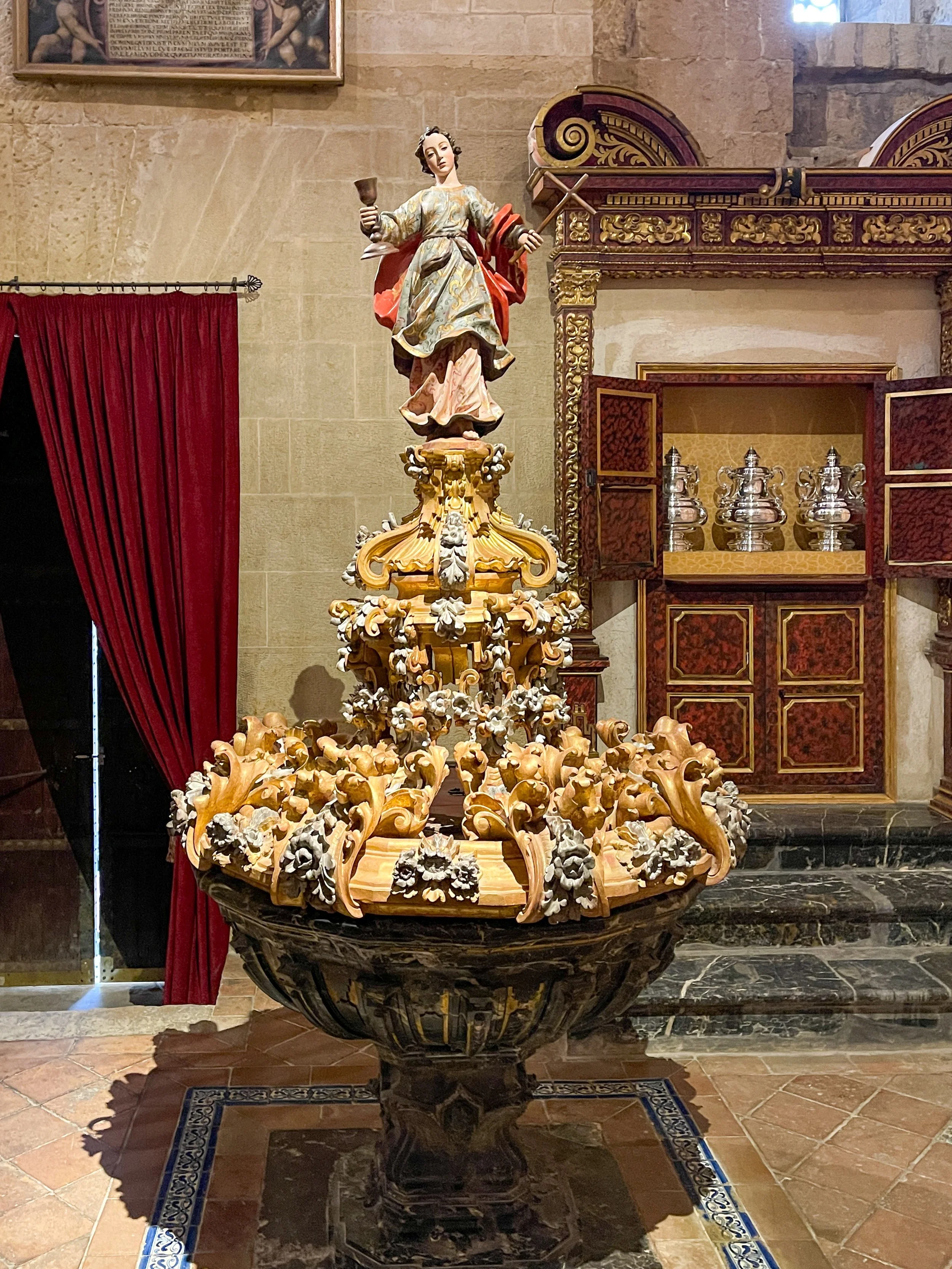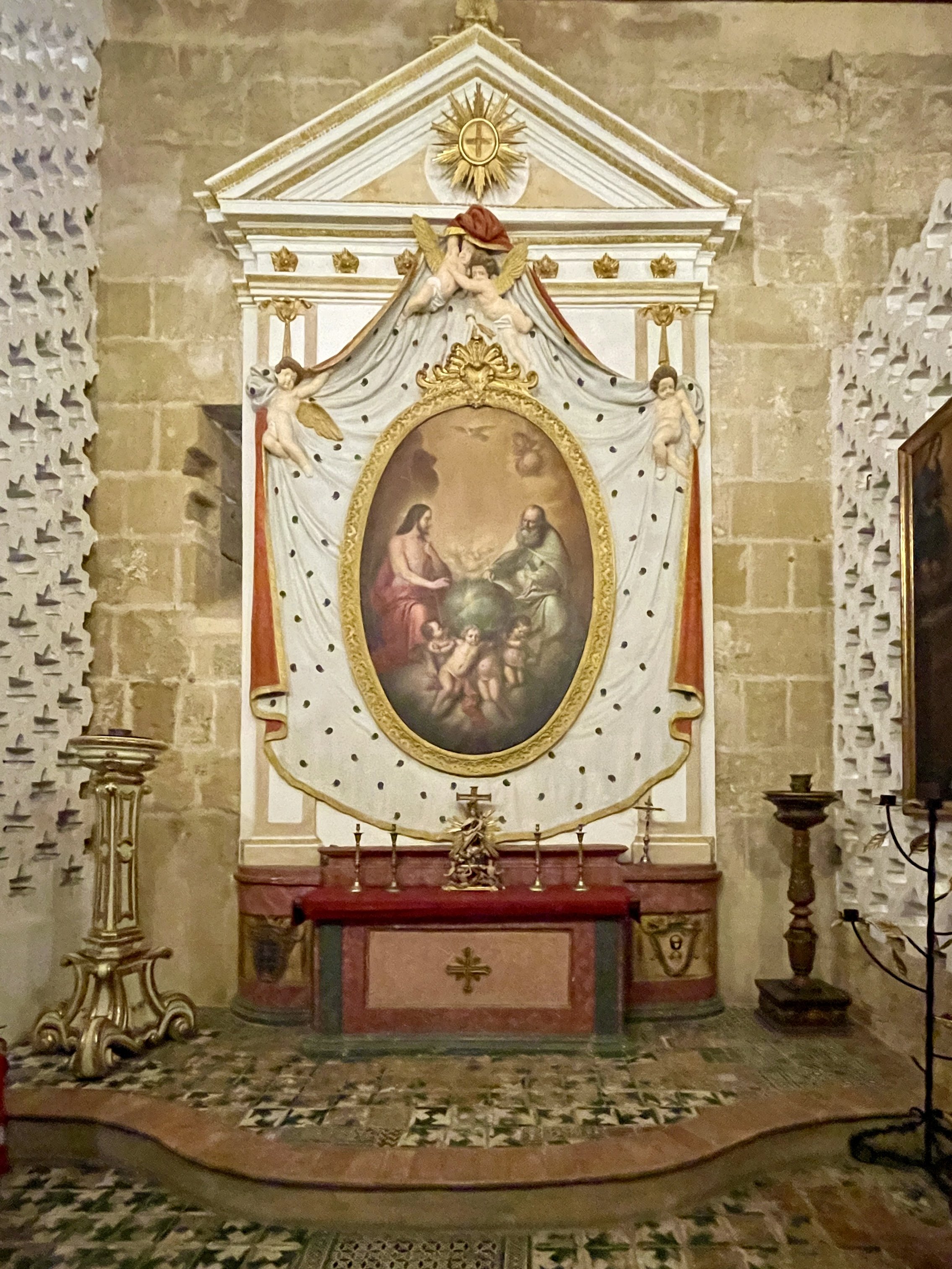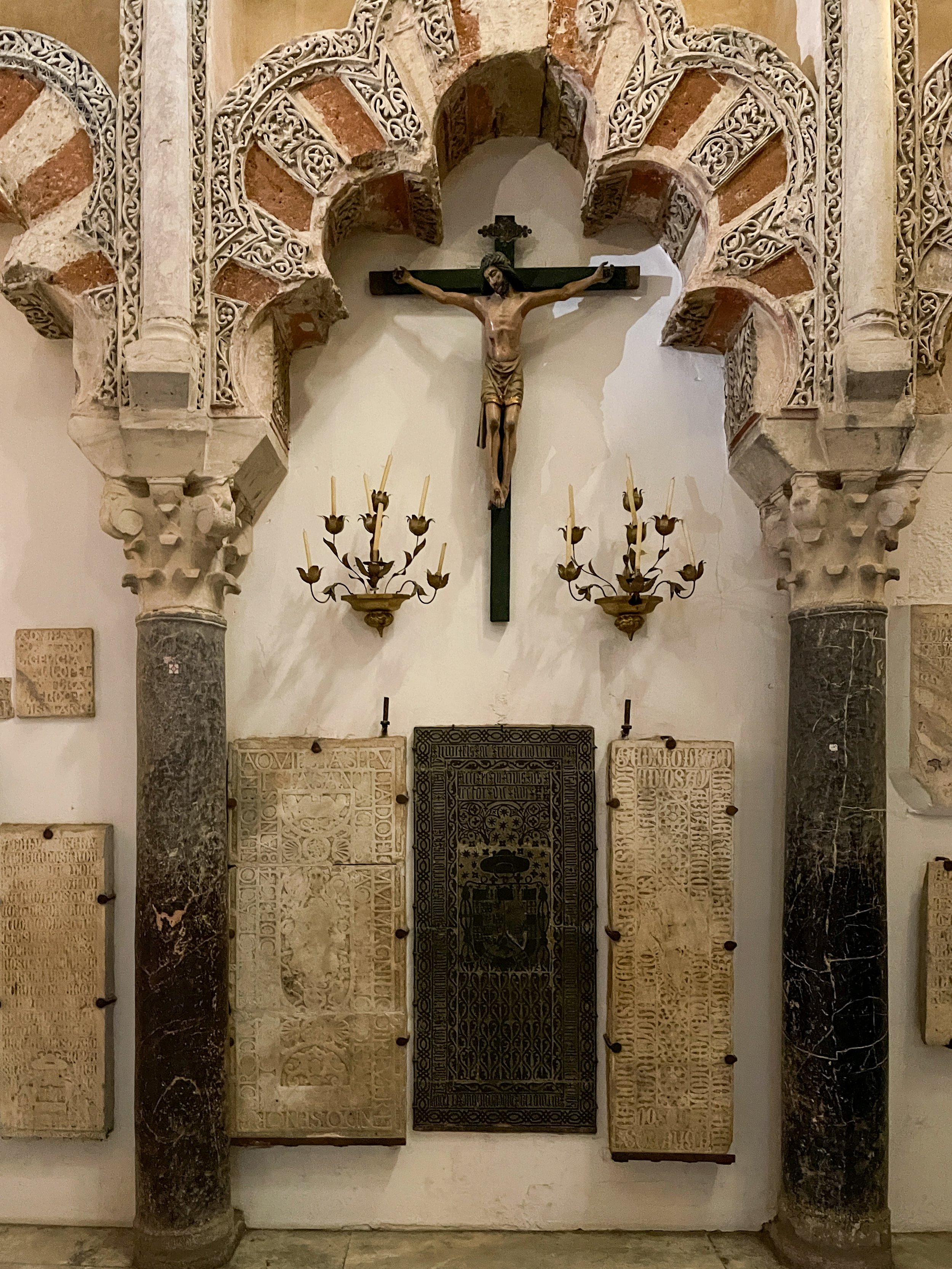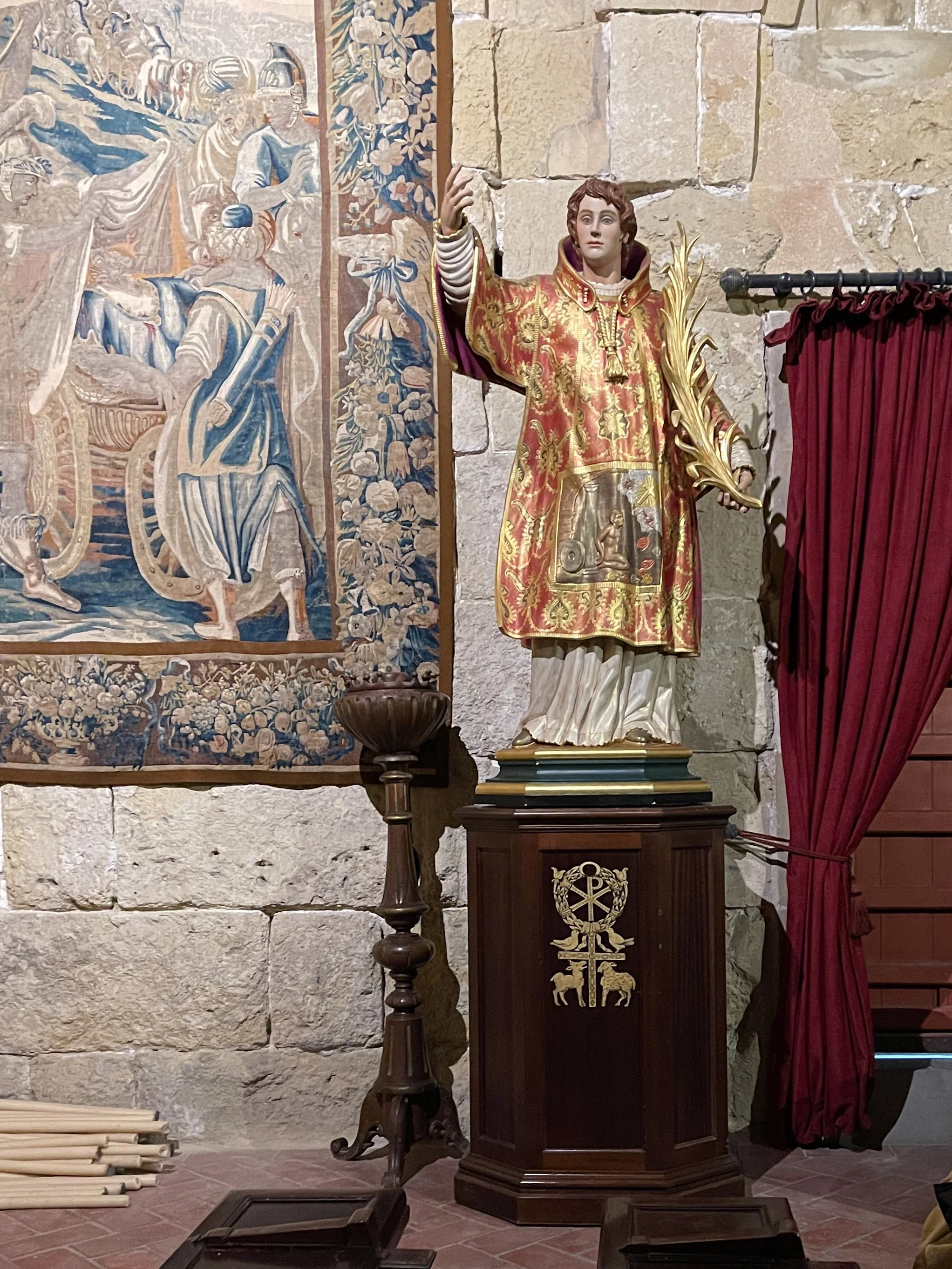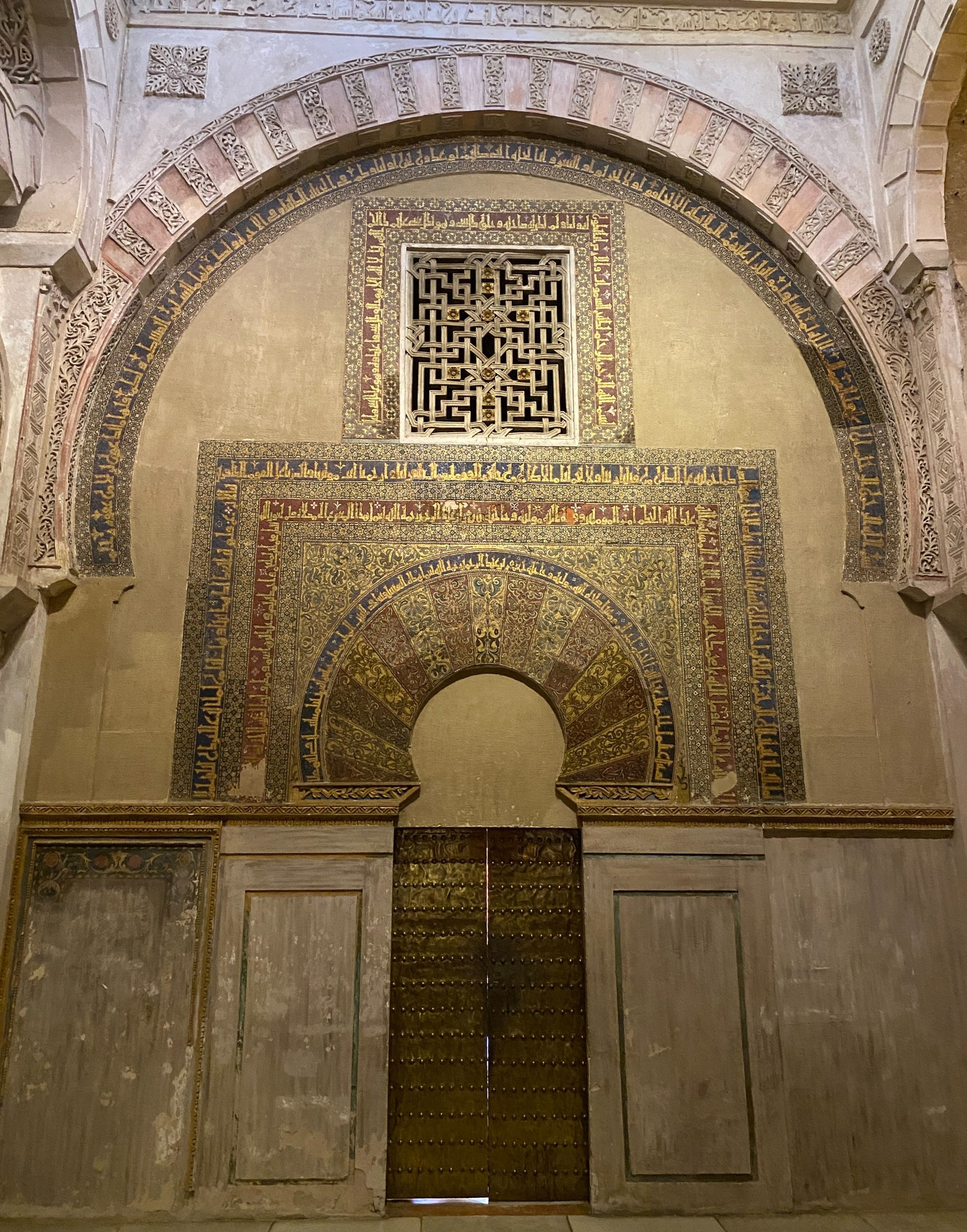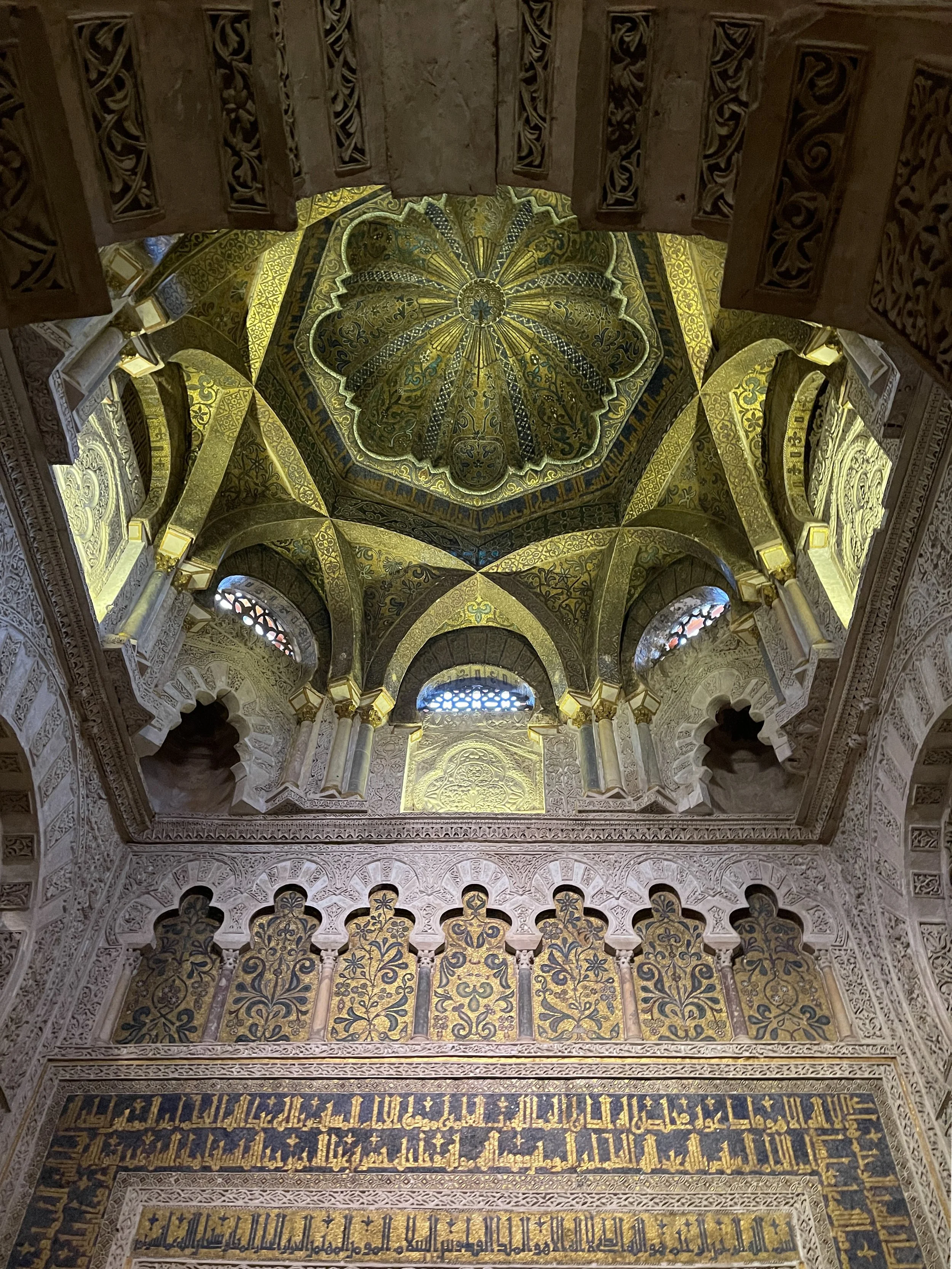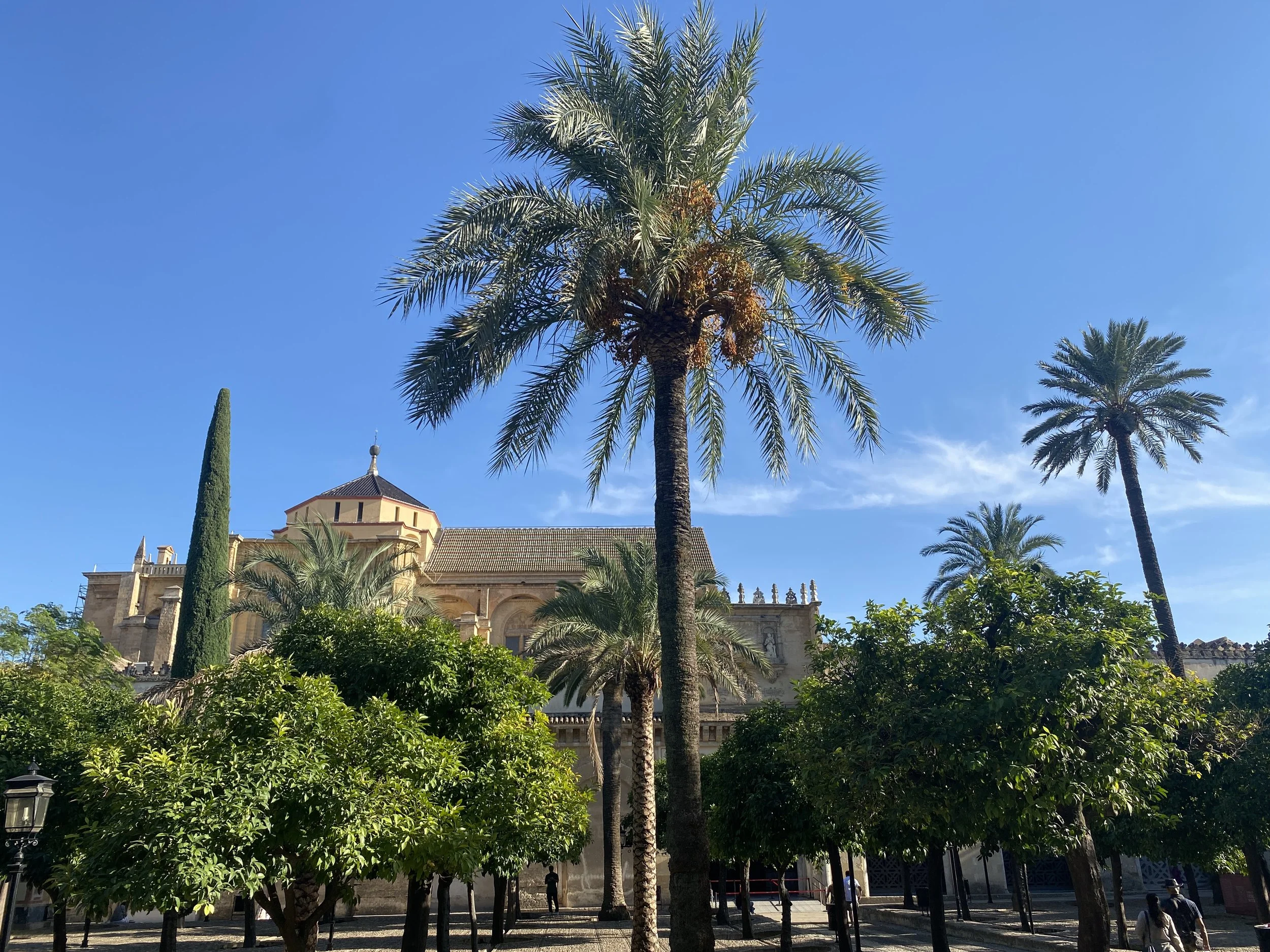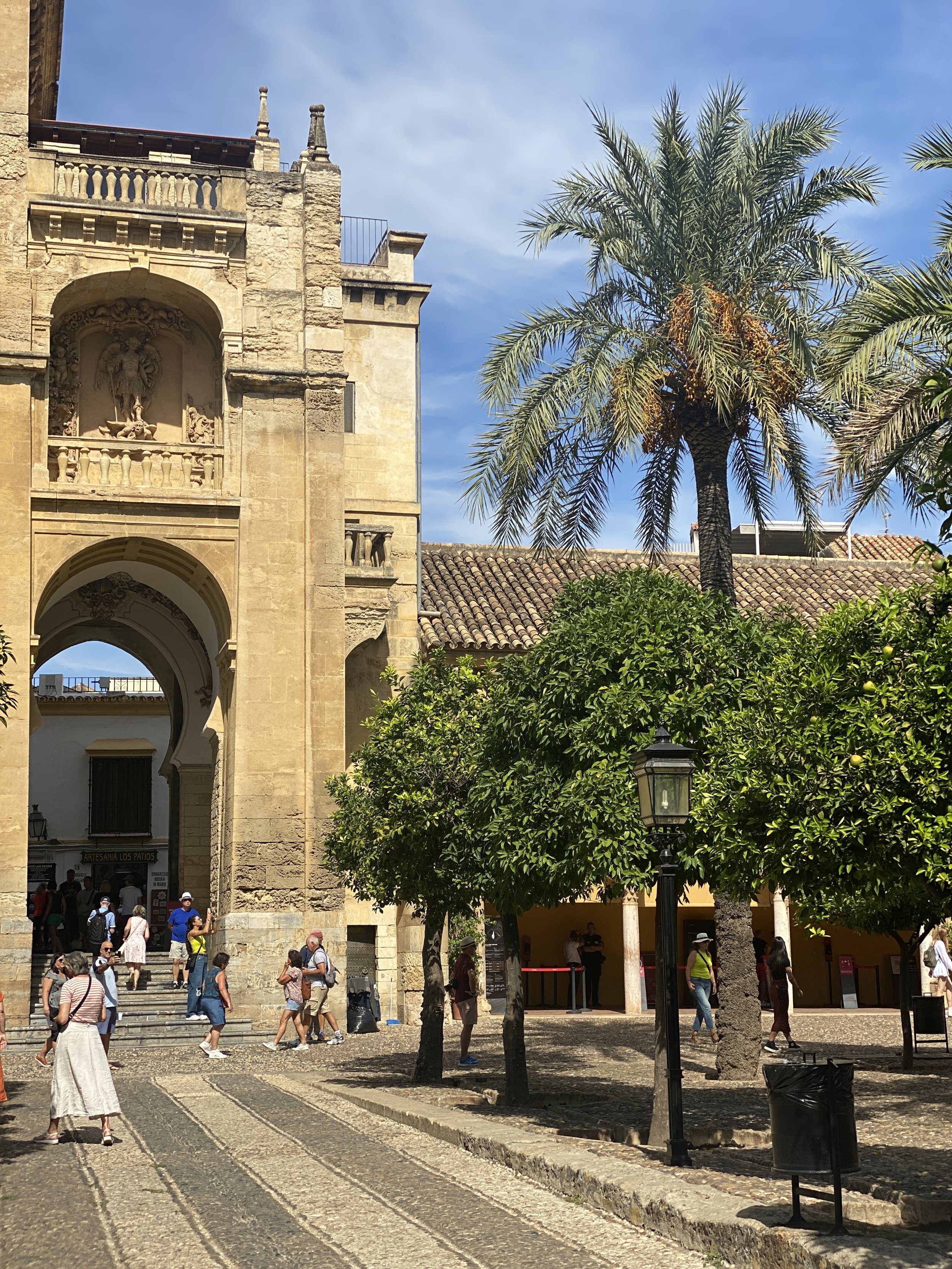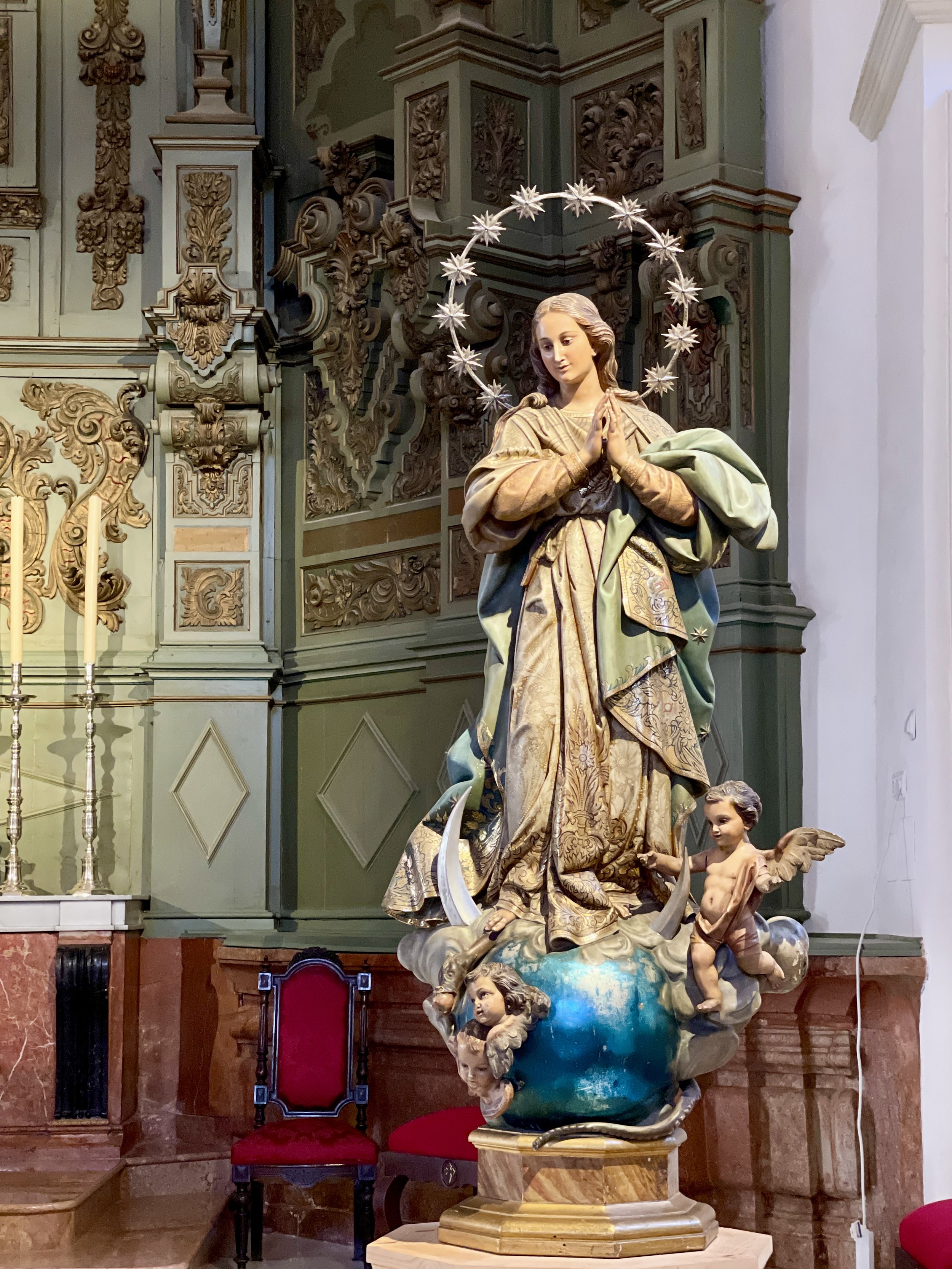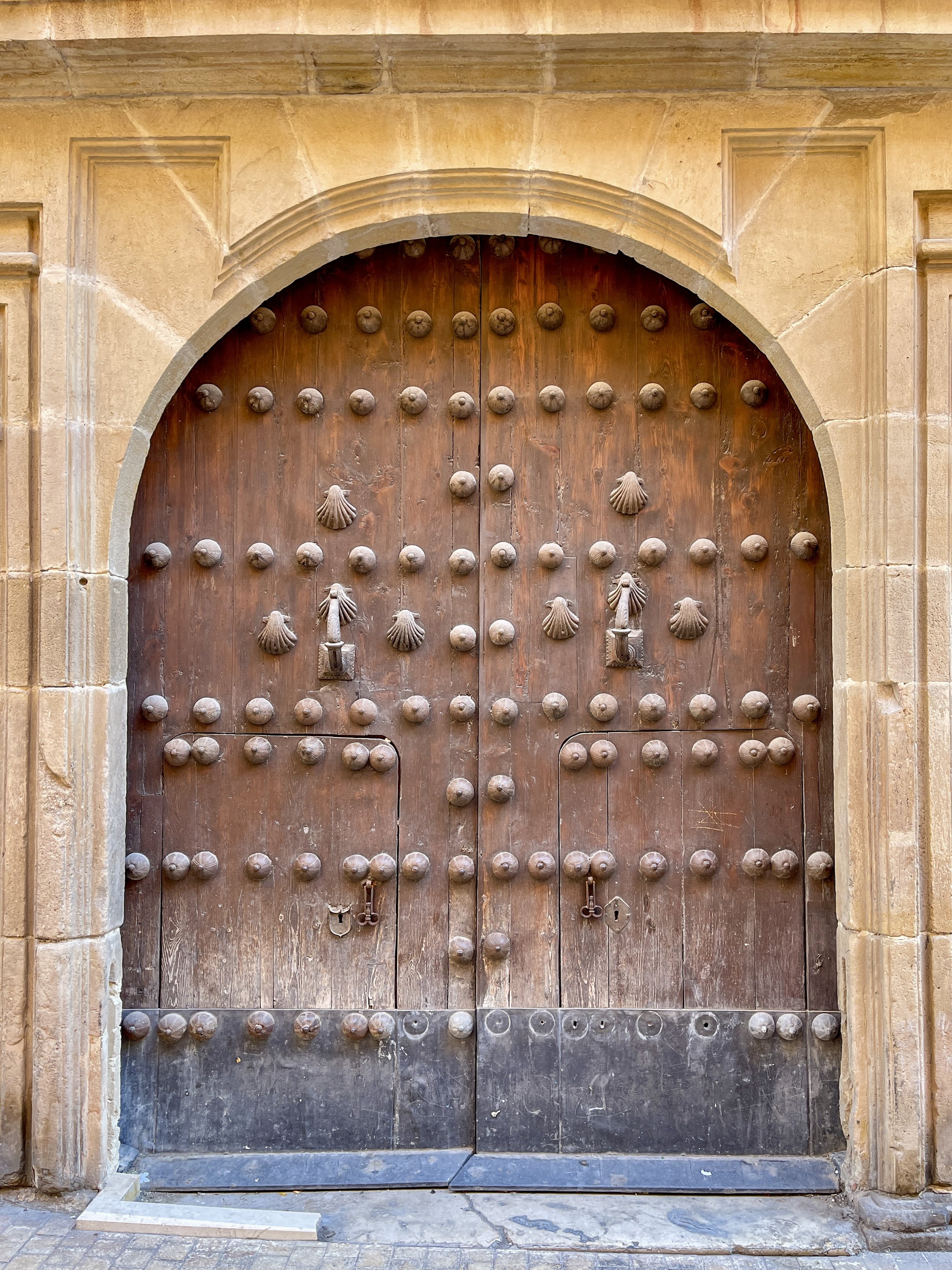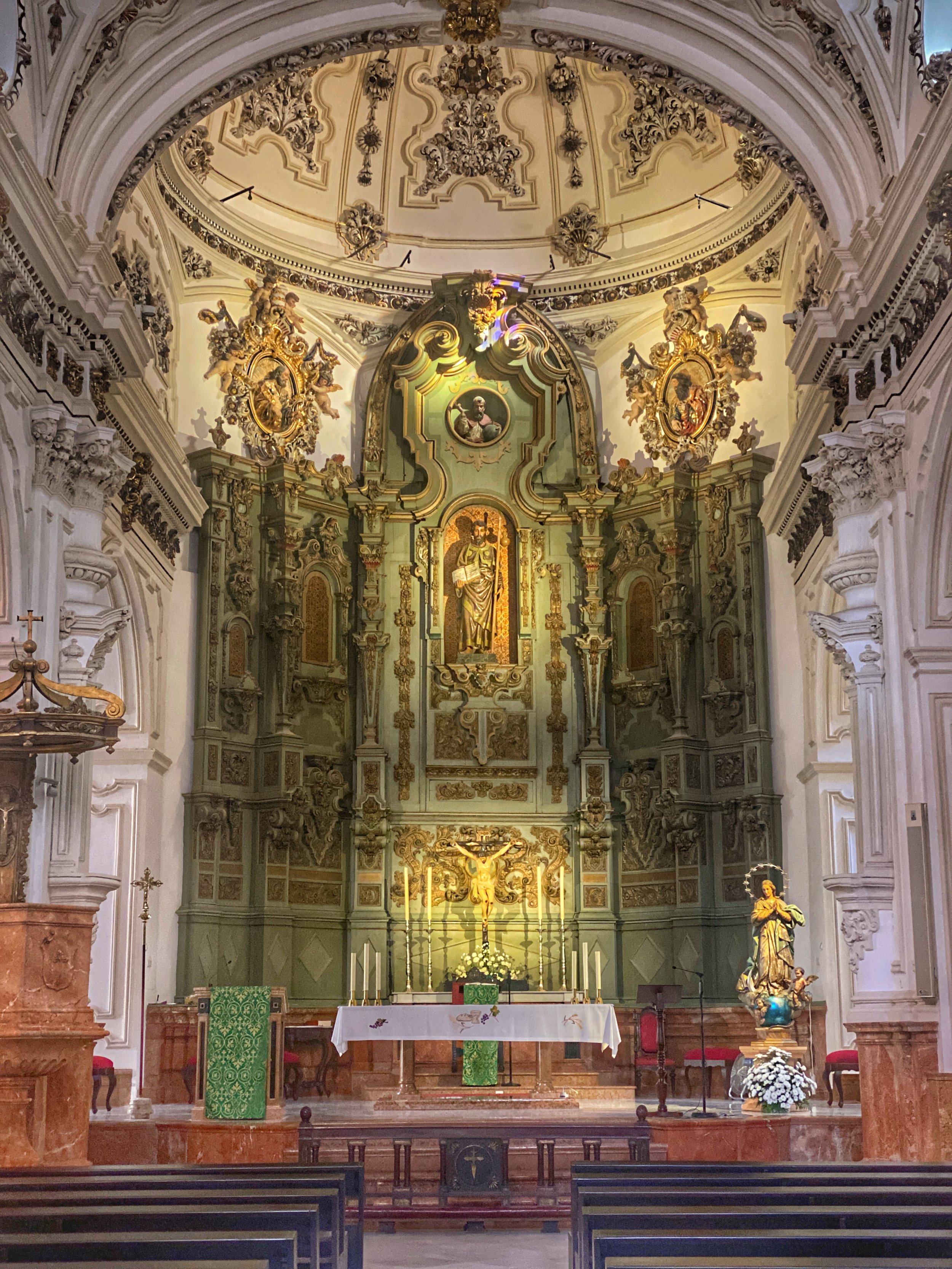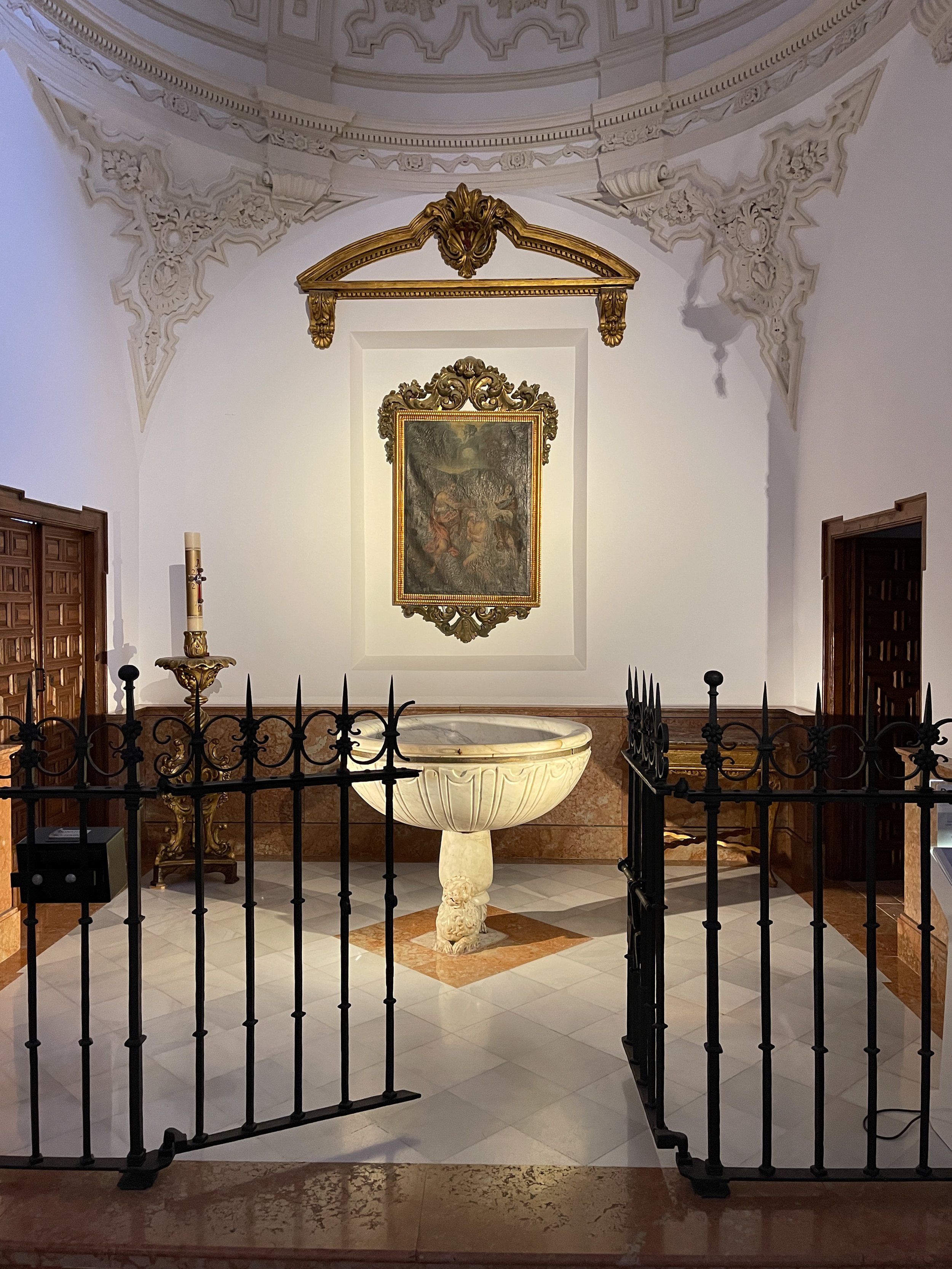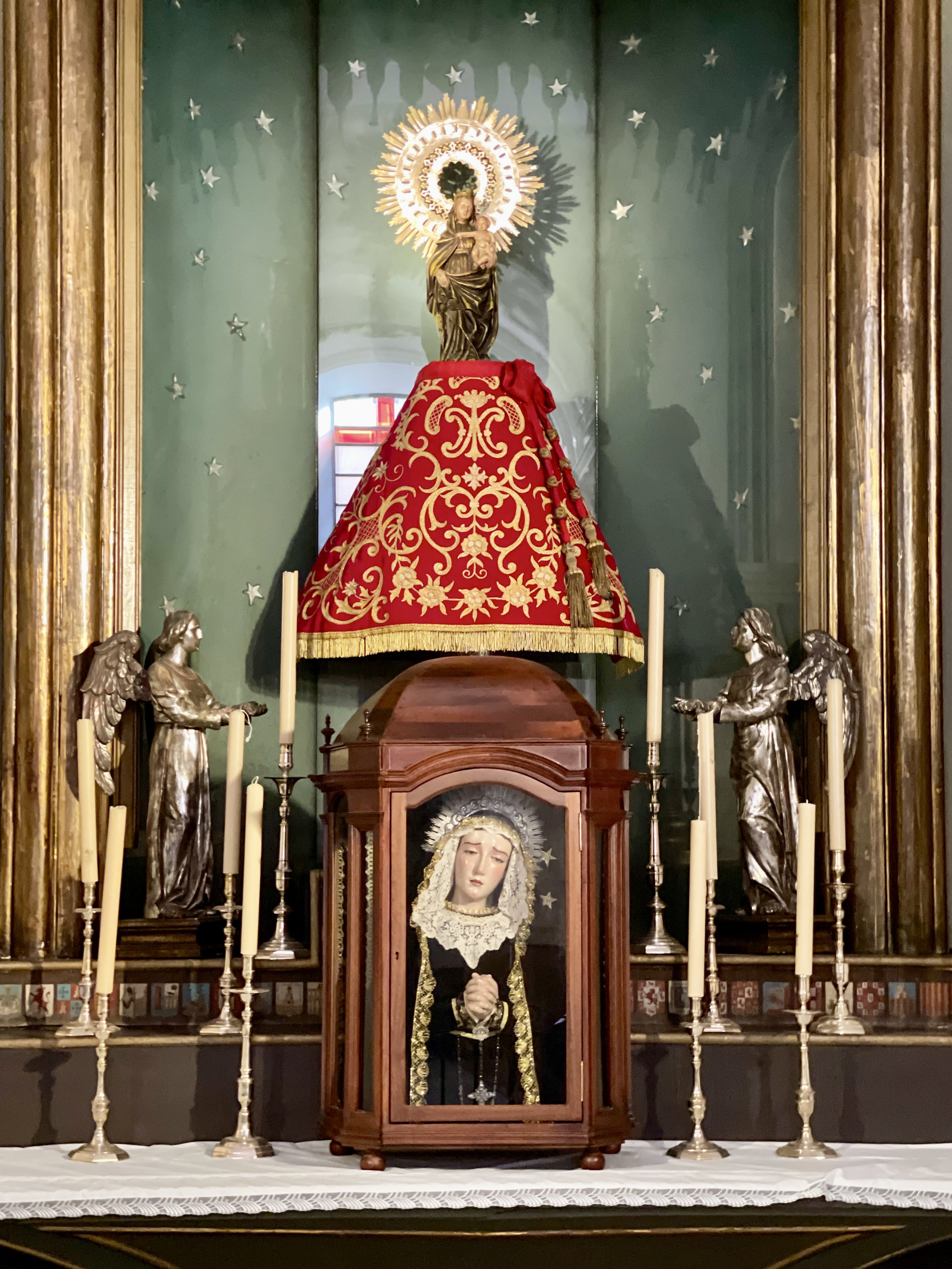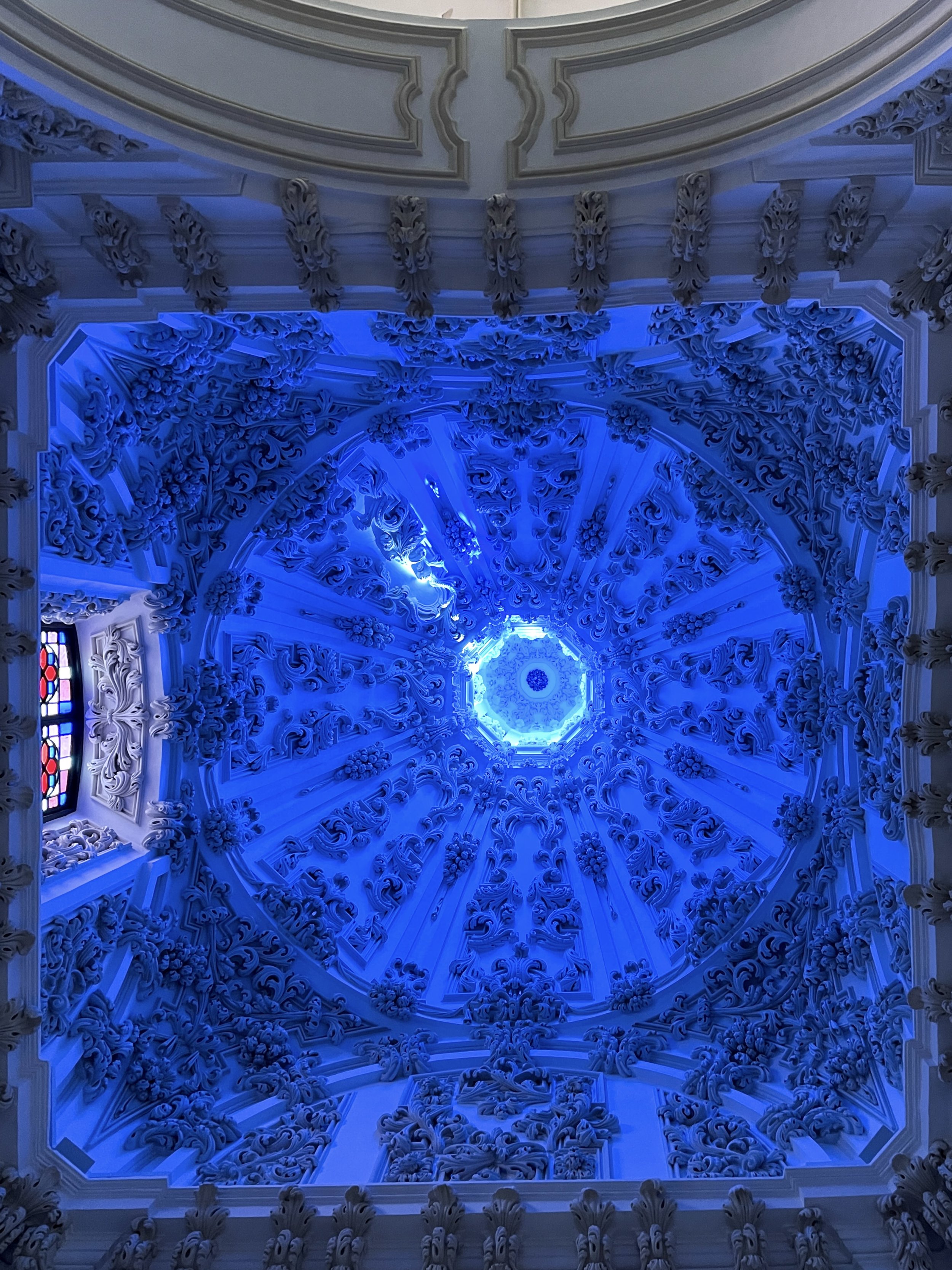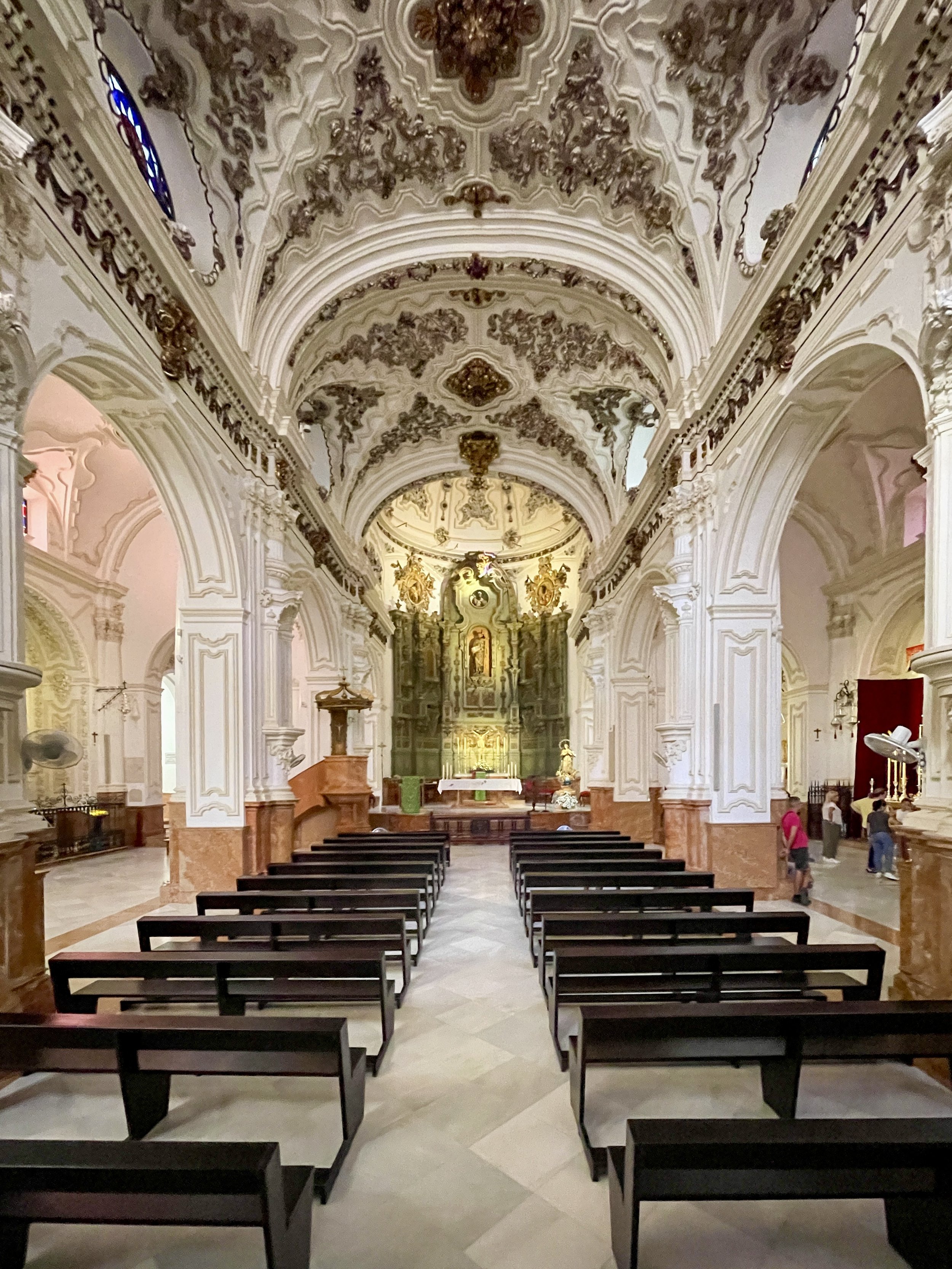Visiting Igreja de São Domingos in Lisbon? Just off Rossio Square, this fire-scarred church turns ruin into reverence.
Once dripping in gold and glory, the Church of São Domingos in Lisbon, Portugal now wears its wounds with pride. A fire-charred interior, a bloody past, and a defiant refusal to hide the damage make it one of the most hauntingly honest churches in Europe.
We’d already been in Lisbon a couple of days when I flipped through a guidebook and saw a photo of São Domingos’ interior, with those scorched terracotta-colored walls and raw stone arches. I stopped mid-page. It didn’t look like any church I’d ever seen; it looked like something that had survived the end of the world. I turned to Duke and said, “We have to find this place.”
“Workers reinforced the structure but left the burn marks as they were, creating an atmosphere that feels halfway between holy and haunted.
It’s not “beautiful” in the traditional sense, but it’s impossible to forget. ”
Imagine our surprise when we realized it was right under our noses — tucked just off Rossio Square in a strangely angled building we’d already walked past several times without noticing. From the outside, São Domingos looks a bit plain, its façade rather unassuming. But step through the doors and it’s like falling through time. Lisbon’s brightest square gives way to one of its darkest, most moving spaces.
Inside Igreja de São Domingos
The first thing you notice inside Igreja de São Domingos isn’t the altar or the statues — it’s the walls. They’re scorched, cracked and blistered like the inside of a volcano. You half-expect to smell smoke. Once upon a time, this was one of Lisbon’s most lavish Baroque churches — all gold leaf, marble and over-the-top devotion. Then, in 1959, fire ripped through it, devouring the splendor and leaving behind something much more human.
Most churches would have been restored to postcard perfection. São Domingos wasn’t. The decision to leave its wounds visible — blackened stone, warped columns, burnt sienna ceilings that look like they still ache — feels radical, especially in a city that prides itself on polished tiles and pastel façades. This one’s not pretending. It’s survived earthquakes, massacres and flames, and it’s still standing — raw, imperfect and more sacred for it.
The fire that ravished São Domingos is believed to have started at the high altar — with, possibly, a candle to blame.
The Fire That Changed Everything
In 1959, a fire tore through São Domingos, leaving only its stone skeleton behind. The blaze gutted centuries of gilded wood and painted ceilings, the kind of gaudy grandeur that Baroque churches specialized in. Parishioners watched in horror as molten gold dripped from the altar and statues melted into unholy puddles. Yet instead of rebuilding it to its former blingy glory, Lisbon decided to do something almost heretical: It left the scars.
The fire broke out on August 13, 1959, just after dawn, starting near the high altar — the very heart of the church. No definitive cause was ever confirmed, though some reports suggested a stray candle or heat rising through an old chimney shaft.
Within minutes, flames shot through the wooden roof and raced down the nave, feeding on centuries of lacquer, paint and gilt.
More than 100 firefighters from across Lisbon rushed to the scene, and crowds filled Rossio Square to watch in disbelief and despair.
Despite the firefighters’ efforts, the roof collapsed, killing two of them and reducing the sanctuary to a molten ruin.
Saint Dominic’s vision of receiving the rosary from the Virgin Mary
Saint Thomas Aquinas, the Dominican Order’s scholar-saint
The losses were staggering. The great pipe organ, centuries of paintings and sacred objects — including a revered 17th century image of Our Lady of the Rosary — were destroyed.
The heat was so intense that the marble itself split, and the once-golden altars ran like wax.
For a church that had hosted royal weddings, funerals, baptisms and national ceremonies, the devastation felt almost personal — a wound carved into Lisbon’s collective memory. That same year, São Domingos was declared a National Monument, ensuring that what survived would never again be hidden behind fresh plaster.
Saint Dominic (São Domingos), founder of the Dominican Order, was devoted to truth through study and preaching.
São Domingos, the Saint Who Started It All
It feels poetic — maybe even karmic — that the church dedicated to Saint Dominic, the man who founded the Dominican Order, should end up looking like penance. Dominic was no quiet monk. Born in 1170 in Spain — supposedly on a Sunday (domingo), hence his name — he was a fiery preacher famous for fighting heresy and convincing people through debate rather than violence. At least, that was the idea. His order later became the intellectual arm of the Inquisition — less conversation, more confession under duress. Not quite the legacy he’d hoped for.
Dominic himself, though, was fascinating. Legend says his mother dreamed of a dog carrying a torch in its mouth, setting the world aflame — a symbol of how her son would spread faith like wildfire. (“Dominican,” after all, comes from Domini canes — “the dogs of the Lord.”)
He died in Bologna, Italy in 1221, apparently of sheer exhaustion from walking and preaching barefoot across Europe.
Standing inside São Domingos today, it’s hard not to think of that dream — of flames and faith intertwined.
Saint Joseph (São José), the carpenter stepfather of Jesus and patron of Portugal, gets more reverence here than perhaps any other country.
The Shadow of the Inquisition
For a church that now feels so peaceful, São Domingos has a disturbingly violent past. Long before the fire, before Lisbon’s earthquakes and rebuilds, this was the epicenter of something far darker: the 1506 Massacre of Lisbon’s Jews.
It started with a miracle gone wrong. A drought had gripped the city, and crowds filled the church, praying for rain. When someone claimed to see Christ’s face glowing on the altar, a man in the crowd dared to doubt it — and was beaten to death on the spot. The frenzy that followed spilled into the streets, egged on by Dominican friars who urged the mob to “cleanse” Lisbon of unbelievers.
For three days, chaos ruled. Jews and New Christians (converted Jews, many forcibly baptized) were dragged from their homes and slaughtered. By the time it ended, an estimated 2,000 people were dead. The king was away; the city, soaked in blood. And São Domingos — that grand, gold-drenched house of God — had become a stage for fanaticism.
Outside the church today, there’s a modest memorial stone, easy to miss unless you’re looking for it. It reads, in both Portuguese and Hebrew: “In memory of the thousands of Jews who were victims of intolerance and religious fanaticism.” A single Star of David rests at its center, quietly defying centuries of silence.
Nearby lies Rossio Square — once the site of Lisbon’s public executions, where the condemned were burned at the stake in the name of faith. The Dominican friars, the same order tied to this church, often presided over those ceremonies, chanting prayers as flames rose.
It’s impossible not to sense the irony: The very order that once helped fuel the Inquisition now prays beneath ceilings blackened by fire. The church that once blessed the flames became a victim of them.
Step inside afterward and the air feels heavier, as if the walls themselves are still atoning. Maybe it’s Lisbon’s way of keeping the story honest — no whitewash, no denial, just stone and ash and memory.
Rebuilding, Remembering, Reclaiming São Domingos
Lisbon has a complicated relationship with ruin. It’s a city that’s burned, crumbled and drowned more times than seems fair — yet it always finds a way to look good doing it. After the devastating 1755 earthquake, much of Lisbon was rebuilt with Enlightenment precision: straight boulevards, orderly plazas, symmetrical façades — all courtesy of the Marquês de Pombal (Marquis of Pombal), who refused to let chaos have the final word. But São Domingos never quite conformed.
When fire tore through the church in 1959, the city could’ve easily restored it to its former Baroque bling. Instead, Cardinal Manuel Gonçalves Cerejeira, the Patriarch of Lisbon at the time, made the startling decision to leave the damage visible. He wanted the church to stand as a monument to survival — a spiritual scar that reminded worshippers of both faith and fragility.
In the days after the fire, thousands of Lisboetas crowded around the smoldering ruins, stunned by what they saw. The interior that had once hosted royal weddings and state funerals was gone, its marble columns cracked and its altars reduced to cinders. Yet amid the shock, something shifted — the city seemed to accept the ruin as part of itself. When rebuilding began, Lisbon’s leaders chose not to repaint or replaster. The church’s new status as a National Monument cemented that choice, enshrining the damage as a public act of remembrance.
The heat had cracked the limestone, buckled the arches, and scorched the marble into shades of rust and rose. Replastering it would’ve been like putting concealer on a masterpiece.
So the charred stone stayed. Workers reinforced the structure but left the burn marks as they were, creating an atmosphere that feels halfway between holy and haunted. It’s not “beautiful” in the traditional sense, but it’s impossible to forget. The decision echoed another Lisbon landmark: the Carmo Convent, whose roof collapsed in the same 1755 quake and was never rebuilt. It now houses the Carmo Archaeological Museum, a stunning open-air ruin that, like São Domingos, celebrates what survived rather than what was lost.
Both spaces — Carmo’s skeletal Gothic arches and São Domingos’s fire-blistered vaults — speak to the same Lisbon instinct: to remember through ruin. There’s a kind of integrity in that — a refusal to rewrite history with fresh paint. Walk into São Domingos today and you can still see the melted lines where gilding once was, like ghosts of devotion past.
A Living Testament
Step inside São Domingos on any given morning and you’ll find people lighting candles in front of walls that look like they’ve survived the apocalypse. The soot stains catch the flicker of each flame. Tourists wander in hushed awe, cameras half-lowered as if they’re intruding on something sacred. Locals cross themselves and sit quietly, lost in prayer.
If you look closely, the worst fire damage still clings to the area around the high altar — the spot where the 1959 blaze began. The marble floor still gleams in places, though time has softened its edges.
There’s a quiet honesty here. In a city famous for azulejos and ornament, São Domingos doesn’t try to impress you. It doesn’t sparkle or hide the damage. It simply endures. That’s its sermon.
A statue of the Virgin Mary as Our Lady of the Rosary
The Church That Refused to Hide Its Pain
Lisbon does polished beautifully — the colorful façades, the shiny blue tiles, the pastry cases that look like art installations. But São Domingos offers something braver. It’s a church that said no to cosmetic miracles, a reminder that survival itself can be sacred.
Maybe that’s what makes it unforgettable. The gold is gone, the glory has burned away, and yet what’s left feels closer to the truth — the raw, cracked heart of a city that refuses to give up. Lisbon rebuilt itself a dozen times over, but here, at São Domingos, it decided to remember instead.
Visiting São Domingos
You’ll find Igreja de São Domingos tucked just off Rossio Square, in the Largo de São Domingos, where locals queue for ginjinha (Lisbon’s famous cherry liqueur) right outside its doors. It’s hard to miss — the façade is stately but unassuming, the real drama waiting inside.
Hours: The church is usually open daily from 7:30 a.m. to 7 p.m., and entry is free. Early morning or late afternoon is best if you want to feel the light shifting across the walls. –Wally
Igreja de São Domingos
Largo São Domingos
1150-320 Lisboa
Portugal







